☰
- Home
-
Solutions
Transformative solutions we deliver
- GoCRM
- Integrations
- About Us
- Contact Us
- Let's Connect
- Home
- Solutions
- GoCRM
- Integrations
- About Us
- Contact Us

It is common knowledge that doing some research on a used automobile is necessary before making a purchase. This research includes determining the car’s worth, mileage, and title as well as whether there are any problems on the outside or below.
But as a recent SimpSocial article pointed out, brand-new automobiles may sustain damage before being sold, so it’s crucial to look for issues before agreeing to a deal and taking a vehicle off the lot.
Let’s imagine, though, that you discover the damage only after you’ve returned home with the car. Here’s what to do in this circumstance.
What to do in the event that your new automobile has a problem
A lot relies on the kind of damage or flaw you discover in your brand-new automobile, when you discover it, and what your warranty covers. “All car manufacturers offer buyers a factory warranty on their [new] vehicles,” according to an article in automobile and Driver. The price of the warranty is included in the vehicle’s sale price. It’s probable that the dealership will try to upsell you on an extended warranty.
Mike Crossen, a technician at Consumer Reports’ Auto Test Center, cautions against the dealership trying to avoid taking care of the issue.
According to an article he wrote for Consumer Reports, “the dealership might try to have you run the work through your own insurance.”
Crossen emphasizes how critical it is to intervene in such circumstances as soon as you become aware of the harm. What he advises doing next is as follows:
Once you have images showing the damage, email them right away to the dealership.
You can email or text the photos to the salesperson you dealt with. “Even making the trip back to the dealership prior to sending the picture increases the car’s mileage and shifts more of the risk onto the customer,” adds Crossen.
Return the vehicle to the dealership ASAP.
Set up a time to return to the dealership as soon as you can after receiving the images. Make sure that the appropriate dealership personnel—such as the salesperson you collaborated with, their supervisor, etc.—see, recognize, and record the damage on their end while you are there.
Make careful to put everything down in paper.
Verbal assurances are not valid. Before you leave the dealership, ask to see a copy of the documentation (or “we-owe”) that details the damage and how they plan to replace it or reimburse you for it. In this manner, you can verify that they did not omit any information or misrepresent the circumstances, and if they did, they may immediately alter the documentation.
“If there’s no way to prove that the damage did not occur after you took the car, [the dealership] may not agree to fix the problem, but they may offer monetary compensation or a service department gift certificate in lieu of repair,” adds Crossen. Keep in mind that very little damage, such as a rock chip, could be better left unfixed because there’s a risk the freshly applied paint won’t match the original hue.
Crossen advises getting in touch with the manufacturer directly through their customer care line, outlining the problem with the dealership, and finding out what to do next if none of this resolves the issue.

Today’s businesses struggle with massive amounts of data, erratic markets, and changing customer tastes. OpenAI and Bard, two GPT-based technologies, can be useful. They have the ability to foresee market trends, sift through complicated data, and tailor communications with clients. In an ever-changing corporate environment, these cutting-edge AI technologies are essential for sustaining competitiveness and fostering development.
Using GPT to its full potential in CRM is revolutionary. With its attention-grabbing advertisements and automatic, individualized mailers, it transforms mundane jobs. Sales representatives may now auto-generate emails and meeting agendas, which will streamline their process. AI may also compile data from many sources to create knowledge articles, which enhances self-service and case resolution. GPT integration improves customer service and greatly reduces stress in CRM procedures. on service representatives and contact centers.
The GPT-Powered Product Features of SimpleCRM
Through the usage of GPT, SimpleCRM is able to improve the functionality of its CRM and provide users with outstanding value.
Sales Coach Powered by GPT
A breakthrough in the use of GPT-powered AI for sales enablement is SimpleCRM’s Sales Coach. Giving sales teams AI-assisted help gives them a significant competitive advantage in their sales processes. The features of this tool include the ability to do thorough risk and opportunity fit evaluations, recommend the optimal course of action based on the next best action, and calculate deal closing probability with high accuracy.
For each salesman, this sophisticated tool serves as a personal coach. It offers customized advice based on in-depth data analysis, which would normally take a lot of time and be difficult for people to do. The knowledge gained by this AI Teams are able to make data-driven decisions that are in line with their objectives and the demands of their customers when analysis is immediately applied to the sales process.
Sales teams who use Sales Coach so see enhanced efficacy and efficiency, which raises deal closure success rates all around. Businesses may create a sales environment that is both high-performing and robust to market volatility by providing its salespeople with such cutting-edge technologies.
Custom Knowledge Base Driven by GPT
Revolutionizing knowledge base interactions, the SimpleCRM GPT Bot leverages the power of Language Learning Models (LLMs). It can precisely understand user queries, retrieve pertinent information, and traverse through enormous amounts of documents with skill. This enables the bot to produce perceptive, appropriately contextualized replies that closely resemble human exchange.
This artificial intelligence (AI) driven bot automates the labor-intensive, usually manual process of finding and presenting information from extensive knowledge bases, elevating knowledge management to a new level. It does more than only locate and provide information. By taking on the difficult work of comprehending the context of questions, it improves the accuracy and relevancy of the information it offers.
Furthermore, with every engagement, the GPT Bot picks up new skills and modifications. Over time, this leads to steadily better response quality and higher levels of consumer satisfaction. It also scalable quickly, saving businesses the expense of hiring more staff to maintain high service levels during peak hours.
Organizations may greatly improve user experience, expedite information distribution, and improve customer support operations by putting SimpleCRM’s GPT Bot into action. This also frees workers from time-consuming and repetitive tasks.
GPT Support for Client Care
The introduction of GPT Assist for Customer Servicing marks a revolution in the field of customer assistance. By analyzing customer interactions in-depth, automating different aspects of communication, and offering intelligent recommendations for the next steps, this technology leverages the potential of sophisticated AI to help customer support professionals close cases faster.
Fundamentally, GPT Help turns inactive customer care workers into proactive issue solvers. This is accomplished by giving teams predictive information about possible client problems before they become more serious, allowing them to offer preventive remedies that raise customer happiness and foster customer confidence.
This AI-powered technology also makes support case triage more effective. The support staff can prioritize and manage cases more skillfully if they have a better understanding of the nature and urgency of each client concern. Furthermore, GPT Assist may automate repetitive contacts, freeing up human agents to work on intricate problems that call for human intervention.
It also provides a sophisticated capacity to comprehend and evaluate consumer interactions across a variety of media. Because it gives support personnel a complete picture of every client’s journey, this data is crucial because it enables them to customize their approach to meet the specific requirements and preferences of each individual customer.
By incorporating GPT Assist into their customer service operations, organizations may improve customer happiness and loyalty while also drastically increasing service efficiency and effectiveness. It also gives service agents additional authority, which enhances their duties effective and purposeful, raising employee satisfaction and lowering attrition rates. With these advantages, GPT Assist gives companies a strong way to stand out in a field that is getting more and more crowded.
The Path Ahead
The vital role that GPT plays in improving customer experiences and optimizing company processes is becoming more and more clear as we traverse the ever-changing CRM market. GPT’s improved capacity to produce content that appears human and deliver AI-driven support has revolutionized sales processes, marketing campaigns, and customer service procedures.
Standing firmly at the forefront of these developments, SimpleCRM is dedicated to creating ground-breaking solutions. It seeks to make the most of GPT’s capabilities in order to revolutionize CRM operations and continuously provide outstanding customer outcomes.
Furthermore, SimpleCRM understands how critical it is to be ahead of the curve in a world going digital. Businesses may adapt to changing consumer requirements, tailor customer interactions, and ultimately remain ahead of the competition by utilizing GPT technology.
Follow SimpleCRM’s journey during this exciting time of innovation driven by GPT. Keep up with the most recent advancements in CRM and AI, as well as product developments and market insights. With GPT’s robust AI capabilities, we are collectively ushering in a new era of CRM whereby unrealized potential is unlocked and boundaries are redefined.

Marketing is not an easy endeavor in the car sector. Dealers devote a large portion of their time and financial resources to creating marketing campaigns and content. Even with the greatest of intentions, it may be quite challenging to break through the clutter and establish a strong connection with the proper consumers.
It’s true that marketing for cars might seem like a high-risk, low-reward endeavor. Your sales staff will suffer if you are unable to provide the kind of shopping experience that modern vehicle purchasers need.
The good news is that you can get over the obstacles preventing you from executing a fully customized and successful marketing campaign at scale in a practical and calculated manner. The seven easy methods to marketing that will help you stand out are listed below.
1. Use a Marketing Account Manager to Increase Marketing Impact
Having an experienced partner that can keep you informed about the latest technological advancements and best practices makes it simpler to execute successful, captivating marketing campaigns. When you collaborate, the effect of your efforts to provide the appropriate material at the the appropriate moment and stick to your campaign’s plan.
2. Utilize Performance KPIs to Direct Your Advertising Approach
As soon as your marketing approach starts to fall short of your objectives, it’s important to make necessary adjustments. With the use of sophisticated reporting tools, your team can see performance from above and make necessary changes to messaging, audience, and marketing channels.
3. Simplify Your Processes to Increase Efficiency
With dashboards that gauge a campaign’s efficacy, integrated marketing platforms like Automotive Marketing Platform make campaign monitoring simple. You don’t have to waste time on ineffective initiatives anymore. You may make adjustments as you monitor the success of your marketing campaign with quicker access to data insights.
4. Customize, customize, customize!
Your marketing plan should take advantage of every chance to give customers unique, personalized experiences. Dealers using the Automotive Marketing Platform
5. Collaborate with a Supplier of Advanced Data Insights
There is terrible news for marketing teams that depend only on third-party data to locate, monitor, and connect with customers. Third-party data and web browsers are becoming less helpful and more controlled. Making ensuring that the data you have collected (first-party) and the data your vendors have provided (second-party) are dependable and easily available is more crucial than ever.
Assist reputable suppliers that have integrations with popular third-party consumer websites, such Autotrader and Kelley Blue Book from Cox Automotive. You may easily switch from third-party cookies to first- and second-party data without sacrificing the flexibility to customize your message and marketing strategy.
6. Make Your Marketing Processes Automated
Your marketing operations may be automated, so you can provide customers with individualized content without requiring manual management and execution of every stage. You can also be certain that you’re reaching the correct audience at the right moment because automated marketing content and scheduling are based on real-time data about every customer. Personalized car offers and incentives may be created with your CRM when your marketing solutions are integrated with reputable consumer websites like Autotrader and Kelley Blue Book.
7. Combine Your Marketing Technology and CRM to Get Results
Your sales staff will have more information to communicate with customers and complete deals when your marketing solution is integrated with your CRM. Not only does your sales staff have access to consumer data, but they can also view all customized marketing action that has been seen by every customer.
Robust connection across technologies enables your team to access real-time shopper data and activity right from the CRM customer record, saving you the trouble of checking both the CRM and an external marketing platform. It simplifies sales processes and enables your staff to discuss and complete jobs with more knowledge.
Slice Through the Background Sounds
It is feasible to have a successful marketing plan, and it is also easier than you may believe. Make your dealership stand out by utilizing the above-mentioned tactics and advice. Overcome the obstacles preventing you from moving forward and, at last, create a genuinely customized campaign that yields the desired outcomes.
Utilize Automotive Marketing Platform to reach clients more quickly and increase marketing ROI.

Marketing is a fast-paced industry. The strategies, methods, and technology that were successful a few years ago have been replaced by new ones that place an emphasis on customization. It’s now more about what your company can accomplish for your customers than it is about the business.
Conventional dealership marketing strategies are no longer effective, like as birthday cards and emails commemorating purchases. Customers of today demand that your dealership deliver genuine value at every turn. Customers expect marketing that is timely, relevant, and tailored to them.
If you don’t provide them what they anticipate, your potential for sales will be reduced. Does your dealership’s marketing achieve what customers anticipate, or does it get in the way of your goals? It’s not always simple to tell when there may be a issue.
Check out these six indicators that your marketing may be impeding your success, regardless of how well you believe your efforts are going or how much you know has to be improved.
1. Your marketing results are declining.
First, let’s address the most evident indication: a decline in marketing outcomes. Marketing is moving quite quickly, as is the technology that enables individualized client engagements. Any marketing staff at a dealership may find it challenging to stay on top of the many changes.
Falling behind the marketing curve frequently leads to fewer calls, less traffic, fewer unique clicks, and poor or deteriorating marketing outcomes from your website and digital advertising.
Reversing decreasing marketing performance requires identifying the real reason of the issue. Regardless of whether your technology, your messaging, how you’re spending your money, or a mix of these, pinpointing certain issues is an essential first step. When you don’t know what is underperforming, making changes—even broad ones—won’t likely help.
2. You’re Having Trouble Monitoring ROI
You may get a precise, data-driven picture of where you are and where you’re heading with a firm grasp of your marketing ROI. It can assist you in changing directions and determining the messages that engage customers the most. Regretfully, not knowing how well your marketing is doing or finding it tough to track might also be an indication that it’s holding you back.
Campaign tracking is difficult with non-integrated marketing platforms. It requires gathering data from dispersed systems and organizing and comparing data to determine marketing effectiveness.
When you streamline your auto dealership software and your marketing vendors, however, you also streamline your ability to monitor your marketing campaigns. You can quickly make changes to poor performing campaigns and make strategic marketing decisions across your entire business. Simplification of systems equals simplification of tracking marketing effectiveness.
3. You Have a Fragmented, Generic Marketing Approach
To truly personalize your marketing, you have to rely on tools and data to give you insights about your shoppers. If you have an incomplete view of your consumers, that is impossible to do. Without the right data, you’re forced to deliver disjointed, generic marketing. This type of marketing treats every consumer the same—sending the same standard messages into the universe, wishing for anything to stick.
Marketing communications that are not cohesive are frequently produced when several software packages from various providers are used. Although these many technologies and providers may be able to accomplish the task in a workaround, they are also quite costly and have poor data exchange and communication capabilities.
Streamlining your software tools is the answer to haphazard marketing. Find an automobile marketing solution that enables you to swiftly and effectively harness shopper data to customize marketing campaigns with timely and relevant content, as opposed to attempting to balance different marketing suppliers and technologies that don’t communicate to each other.
4. You Only Utilize Data from Third Parties
Third-party cookies are used by a lot of advertising technology these days to locate, follow, and connect with customers. However, several popular web browsers, such as Google’s well-known Chrome browser—have either ceased accepting third-party monitoring cookies or intend to do so.
Your marketing may soon run into problems if your automobile marketing solutions just use third-party cookies in place of your own first-party data. Furthermore, depending on third-party data means you’re passing up important chances to integrate online and in-store experiences and customize customer journeys—even before cookies become outdated.
Thankfully, there is a fix for this issue. The consumer information that your dealership has (first-party data) and the information provided by partners (second-party data) will increase in value as third-party data becomes more controlled and less helpful. By leveraging the information your dealership receives from its own customer interactions, you may target individual customers more successfully with tailored marketing messages.
To reach a broader population, you’ll want to partner with trusted vendors that integrate with highly visited third-party consumer sites, such as Kelley Blue Book and Autotrader. With a robust set of first- and second-party data, you can smoothly transition away from third-party cookies without losing the ability to personalize your message and marketing approach.
5. You Have to Manually Execute Everything Yourself
There’s no way around it; delivering the type of marketing that today’s consumers expect is complicated. Personalizing marketing requires using a variety of data and tools, and doing it all manually and on your own is often a painful experience—for you and your shoppers. If you’re executing all your marketing strategies manually, you’re likely missing out on opportunities to improve efficiency and return. The buddy of dealership marketers is automation. You can provide customers with dynamic, proactive, and tailored content by automating your marketing workflows and eliminating the need for manual step-by-step management and execution.
Additionally, you can be certain that you’re reaching the correct audience at the right moment since automated marketing content and scheduling are based on real-time data about every customer. Additionally, the optimal course of action for contacting your customers is already being followed up on.
Seek out suppliers who offer knowledgeable marketing assistance in addition to automation. An expert marketing account manager can assist make sure that your marketing is carried out in a way that complements your plan and can also keep you informed about developments and best practices in the field. in the field of technology.
You can devote more time to selling vehicles by letting your marketing account manager assist your dealership put the necessary tools in place, make the most of them, and make sure your marketing budget is being maximized.
6. There Is No Integration Between Your Marketing Solution and CRM
Your sales staff may be in the dark about what marketing consumers have viewed and interacted with if your dealer CRM and marketing solutions do not exchange data.
However, additional information is available to your sales staff to assist them engage with customers and complete transactions when your marketing system interfaces with your CRM. Your sales staff may view all customized marketing efforts that have been directed towards each individual customer, in addition to having access to shopper data. Robust connection across technologies allows your team to access real-time shopper data and activity right from the CRM customer record, saving you from having to check both the CRM and an external marketing platform. It simplifies sales processes and enables your staff to discuss and complete jobs with more knowledge.
Maximize the Impact of Your Marketing
Are you being held back by your marketing? Are all the telltale indications and symptoms indicating that your marketing strategy lacks integration and personalization? If yes, how can you use more individualized marketing messaging for every single customer to get back on the right track and increase profits?
You may get assistance from a marketing account manager and benefit from powerful data insights, automated processes, easy CRM connection, and a contemporary marketing solution. Delivering the appropriate message at the appropriate moment may effectively engage buyers.

A recent investigation delved into the perspectives of motorcyclists regarding riding in rainy conditions. What motivates them to do so? Are they fearful? And how do they manage the challenges of slippery roads and reduced visibility?
A significant portion of the riders surveyed admitted to frequently riding in the rain, demonstrating a willingness to confront adverse weather conditions. Conducted by experts in the field of motorcycles, this study aimed to understand these dynamics not merely out of curiosity but with the intention of enhancing safety measures and offering insights into suitable gear for inclement weather.
The rider demographics and their experiences with rainy rides were examined. While motorcyclists represent a diverse group, a majority possess extensive experience, having been riding for over two decades. These riders are not occasional enthusiasts but seasoned individuals accustomed to handling their bikes in various weather conditions. Many of them maintain an active riding schedule, covering hundreds to thousands of miles per month during favorable weather.
However, rain serves as an equalizer, transforming familiar routes into challenging endeavors. Despite more than half of the riders frequently encountering rainy conditions, not all instances are by choice. Some riders embark on their journeys under clear skies only to confront sudden changes in weather. Yet, there exists a subset of riders who either embrace the challenge of riding in the rain or find it necessary to proceed with their plans regardless of the weather.
While some riders harbor reservations about riding in wet conditions due to the increased risks associated with slick roads and reduced visibility, they persist nonetheless. Only a minority feel significantly uneasy and lack confidence when riding in the rain.
Motivations for riding in rainy conditions vary among individuals. For some, it’s about the experience itself—embracing the sense of freedom and adventure. Others view it pragmatically, as a means to reach their destinations despite the weather. Although not ideal, riding in the rain is perceived as an inherent part of the motorcycling journey by many enthusiasts.
The decision to ride in the rain involves weighing factors such as necessity and comfort. Essential trips, such as commuting to work or attending important appointments, often prompt riders to brave the rain, whereas recreational outings might warrant reconsideration. Riders carefully assess the intensity of rainfall and their preparedness with appropriate gear before deciding to ride.
Furthermore, environmental factors such as darkness and prolonged rain duration influence riders’ caution levels. Road conditions, whether smooth highways or rough backroads, also play a crucial role in their decision-making process.
While not all riders rush to adopt the latest rain-ready technologies, a significant portion acknowledges the value of motorcycles capable of handling various weather conditions. For committed riders, the journey doesn’t halt when clouds gather; instead, they seek out bikes that can withstand any challenge.
In conclusion, this examination of motorcyclists’ attitudes toward riding in the rain underscores their collective respect for the challenges posed by adverse weather. Safety remains a paramount concern, prompting riders to adopt cautious approaches and seek out training to navigate wet conditions more effectively. This study not only highlights the concerns and choices faced by riders during inclement weather but also underscores the demand for motorcycles equipped to handle such conditions effectively. Ultimately, for the motorcycling community, it’s about more than just reaching a destination—it’s about embracing the ride, prioritizing safety, and sharing the experience of confronting the elements, whether rain or shine.
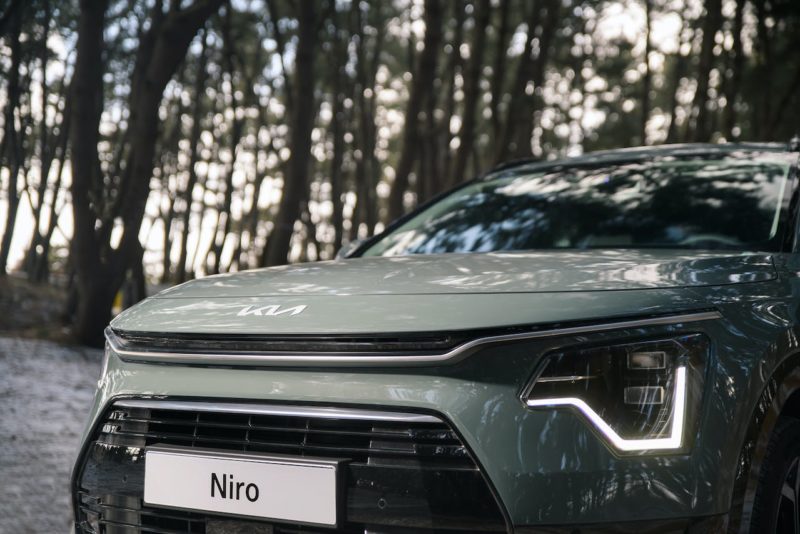
The 2023 Kia Niro is at the forefront of Kia’s electric car strategy, offering three models: Hybrid, plug-in hybrid, and fully electric. Redesigned for the year, these compact crossovers prioritize efficiency, versatility, and driving enjoyment.
Hybrid Harmony: Balancing fuel efficiency and dynamic driving.
Plug-in Prowess: Electric-only for short trips, hybrid for longer journeys.
Electric Elegance: Zero-emission driving for a sustainable future.
Toyota Corolla Cross: Similar in size but lacks hybrid options.
Honda HR-V: Slightly longer, similar price, but not a hybrid.
The 2023 Niro caters to diverse preferences, propelling Kia into an electric era that combines innovation, sustainability, and style. Whether Hybrid, plug-in hybrid, or electric, it’s a compelling choice for those embracing a greener tomorrow.

What Does Inflation Mean? How Prices Increase Over Time
The rate of overall price increases for goods and services is reflected in inflation. A given dollar can purchase a decreasing proportion of an item or service as inflation rises. This phenomena denotes a decline in the purchasing power of money in addition to increasing prices. For example, what $20 bought five years ago can now cost $25.
How Economists Measure Inflation: The Instruments They Use The Producer Price Index (PPI) and Consumer Price Index (CPI) are two instruments used by economists to quantify inflation. The CPI measures changes in the cost of living by tracking the price of a collection of standard goods and services across time. The average changes in prices that domestic producers receive for their output are measured by the PPI, in contrast. These instruments aid in comprehending the pace at which the economy’s prices are shifting.
What Causes Inflation?
The function of supply and demand
When there is an imbalance between supply and demand, inflation frequently results. Prices will typically rise when demand for some goods and services grows faster than supply can keep up with demand. A number of things, such as economic expansion, rising consumer spending, or supply constraints, may cause this. Comprehending this equilibrium is essential to understanding price fluctuations.
OTHER FACTORS AFFECTING INFLATION In addition to supply and demand, other factors that may affect inflation include production costs, governmental regulations, and worldwide economic trends. For instance, rising production costs can result in increased pricing for customers if the price of raw resources like oil rises. In a similar vein, changes in interest rates and the amount of money printed by the government can influence inflation rates.
The Effects of Inflation on You Your Ability to Purchase
Inflation has a direct effect on the amount of money you can purchase. Your purchasing power declines as prices rise. This implies that over time, you’ll be able to afford less if your salary doesn’t grow at the same rate as inflation. One of the main reasons financial planning requires an awareness of inflation is because of this erosion of purchasing power.
It’s critical to modify your budget during periods of inflation. Identifying areas for cost-cutting and prioritizing necessities might help you manage the effects of rising pricing. Setting long-term financial objectives, such as retirement savings, requires careful consideration of inflation since it will impact the value of your investments in the future.
It’s critical to form wise spending and saving practices in order to combat the effects of inflation. Look for ways to boost your income, such as taking up side projects or positions with greater compensation. Preserving your purchasing power can be achieved by investing in high-interest accounts or other assets that grow faster than inflation. It might also help to be a wise consumer by comparing costs and looking for deals.
Investing Sensibly During Inflation
One useful tactic to combat inflation is investing. Certain assets, such as bonds, equities, and real estate, can provide returns higher than inflation. Investing more widely can help lower risk as well. Seeking advice from a financial expert will help you determine the optimal investment plan for your circumstances.
The Impact of Inflation on the Economy as a Whole
The entire economy is impacted by inflation, not just specific consumers. Increased costs for firms due to high inflation may result in a reduction in hiring or investment. Rising domestic prices have the potential to reduce exports’ worldwide competitiveness, which can have an impact on trade balances.
PUBLIC POLICY, INFLATION, AND GOVERNMENT
Monetary policy, fiscal policy, and regulation are just a few of the instruments that governments utilize to control inflation. Interest rates may be changed by central banks, such as the Federal Reserve in the United States, to combat inflation. Fiscal policies are equally important, and they include taxing and spending by the government. It is easier to understand how governments hope to control inflation when one is aware of these policies.
The Principal Learning
Handling Inflation with Self-Assuredness Taking Charge of Yourself in an Inflationary Environment Being mindful of inflation and being flexible are necessary in today’s environment. You can make better judgments if you know what causes inflation and how it impacts your finances. Keeping up with economic developments and, when necessary, getting expert financial guidance will provide you the confidence to handle inflation.
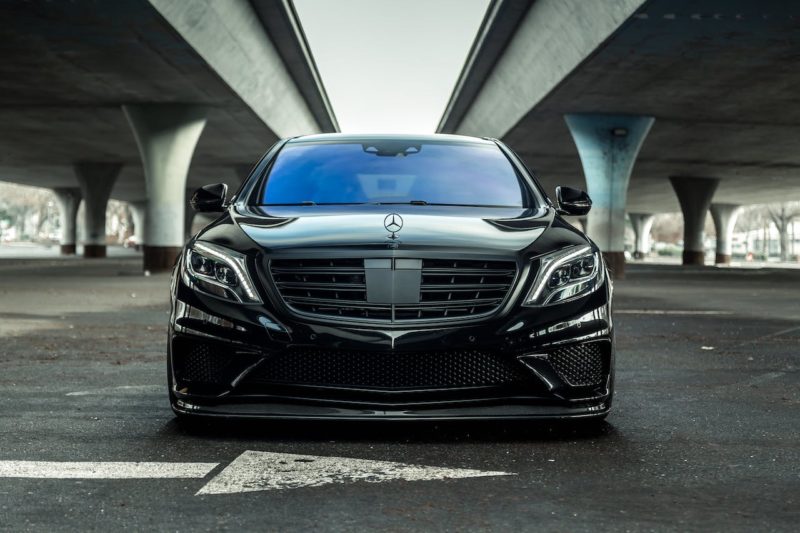 One of the main benefits of the Internet and contemporary technology is that it allows automobile buyers to conduct online vehicle searches. This indicates there’s a chance you could discover the ideal car out of state.
Here are some crucial points to bear in mind if you’re purchasing an automobile outside of your state:
Obtain a history report on your car.
Whenever you buy a car, used or otherwise, it’s a good idea to obtain a vehicle history record, especially if you’re buying it from out of state. This will assist in removing any unexpected problems with the car you are considering buying.
Before you buy, find out from the dealer if you can have the vehicle inspected.
Make an appointment in advance with a nearby mechanic if the dealership allows inspections, so you can bring the vehicle in for an inspection while you test drive it.
Verify the inspection standards in your state.
State-by-state variations exist in car inspection laws, so be sure to check the website of your state’s Department of Motor Vehicles for details on requirements related to safety, emissions, and odometer inspections.
Obtain your registration and title.
The remaining time on the preceding state’s registration is irrelevant when purchasing an automobile from another state. In the state where you presently reside, which is the new state for the car, you will still be required to pay for a new title and registration.
Verify that the vehicle is adequately insured.
It would be advisable to get the specifics on how to properly insure your new vehicle from out-of-state by getting in touch with your insurance company, as different states and financing companies have varied policies regarding auto insurance.
One of the main benefits of the Internet and contemporary technology is that it allows automobile buyers to conduct online vehicle searches. This indicates there’s a chance you could discover the ideal car out of state.
Here are some crucial points to bear in mind if you’re purchasing an automobile outside of your state:
Obtain a history report on your car.
Whenever you buy a car, used or otherwise, it’s a good idea to obtain a vehicle history record, especially if you’re buying it from out of state. This will assist in removing any unexpected problems with the car you are considering buying.
Before you buy, find out from the dealer if you can have the vehicle inspected.
Make an appointment in advance with a nearby mechanic if the dealership allows inspections, so you can bring the vehicle in for an inspection while you test drive it.
Verify the inspection standards in your state.
State-by-state variations exist in car inspection laws, so be sure to check the website of your state’s Department of Motor Vehicles for details on requirements related to safety, emissions, and odometer inspections.
Obtain your registration and title.
The remaining time on the preceding state’s registration is irrelevant when purchasing an automobile from another state. In the state where you presently reside, which is the new state for the car, you will still be required to pay for a new title and registration.
Verify that the vehicle is adequately insured.
It would be advisable to get the specifics on how to properly insure your new vehicle from out-of-state by getting in touch with your insurance company, as different states and financing companies have varied policies regarding auto insurance. 
Trading in your automobile could be a beneficial alternative if you’re trying to replace or upgrade to a new car, but it’s crucial to know how.
Perhaps you’re in the market for new car features like rearview cameras, kid safety features, and parking assistance. Maybe you need extra space for your expanding family or you’d want to get better gas mileage. If you want to avoid the trouble of selling your automobile privately, trading it in for a new or used car might be your best bet. To maximize your investment, it is crucial to understand how car trading operates.
Ascertain whether your car is owned, leased, or has a debt.
You have “positive equity” if the value of your automobile exceeds what you owe or if it is completely paid off. You can use this equity to bargain with the dealer for a lower trade-in price, which will lower the total amount owed on the new car. You have “negative equity” if you owe more money on your vehicle than it is worth. You could be able to apply the negative equity to a new auto loan or financing arrangement. Your planned auto payment will increase as a result of this. If your car is leased, you might need to find out if there are any costs or penalties for trading it in.
Understand the worth of your car as a trade-in.
A car normally loses value the moment you drive it off the lot. It is advisable to ascertain the trade-in value of your automobile prior to visiting a dealer, even though this may not always apply to certain car makes and models. This will enable you to negotiate a reasonable price. You may find out the estimated fair market value of your car by researching it on websites like Edmunds and Kelley Blue Book.
Obtain many quotes.
Obtain quotes from multiple dealers as soon as you know your trade-in value. It is a good idea to do some basic cleaning and get your automobile washed before taking it to a dealer. Consult new and used automobile dealers for estimates. If you want to trade in your car at the same dealership where you bought it, they could be willing to give you a higher trade-in value or a customer loyalty discount. Nevertheless, having multiple estimates will enable you to explore special trade-in deals or bargain for the best deal.
Make a trade-in offer and negotiate.
You might not receive the best value for your trade-in if you accept the dealer’s first offer. Make sure to stand up for the trade-in value of your automobile and make a counteroffer to get the best possible bargain. To make up for the trade-in amount, you need also make sure the dealer does not raise the price of the new car you buy. For this reason, before talking about the trade-in’s value, negotiate the price of the new car.
Come to a consensus.
Make sure you carefully study your contract to make sure your payments are within your means and that the trade-in credit or balance transfer is accurately represented once you and the dealer have agreed upon the trade-in price and the price of the new car.

Have you ever attempted to organize a meal for a family gathering? I’ve never seen anarchy spread so quickly as it does when I observe the many viewpoints on where and what everyone should eat flying around the room.
Strangely enough, I’ve witnessed the same kind of mayhem when marketing teams attempt to devise a plan that wins over all stakeholders. There is a method to prevent pandemonium in both scenarios, from confrontational pointing and opinionated discussions to rising voices and hands on hips:
Direction (and a lot more of it).
More dealership executives need to be active in marketing so they can communicate, set expectations for the intended result, and establish the standards for how everyone should do their task. Otherwise, things become crazy.
Having said that, there are a few crucial elements to make sure marketing teams and dealership executives develop the best strategy possible.
Refrain from firing from the hip!
Do you recall the moment from “Alice in Wonderland” where the Cheshire Cat greets Alice as she comes at a fork in the road?
Alice: Could you kindly advise me on the best course of action from here?
Cat: Well, that really depends on your destination!
Alice: It really doesn’t matter where
Cat: Then, it makes no difference either direction you turn.
As long as I get anywhere, Alice
Cat: Well, if you walk for long enough, you’ll definitely accomplish it.
What am I trying to say?
Too frequently, marketing departments and agencies put tactics into practice without knowing what their goals are. Leaders don’t usually communicate anything more than “sell more cars,” which, regrettably, doesn’t give teams enough of a foundation to thrive.
Conversely, the majority of agencies implement generic outputs that infrequently take into account the distinctive qualities of their dealership partners.
Dealers discover, after months of “work,” that the adage “shooting from the hip” has left them at a crossroads—a place they got to, but not where they truly meant to go.
This brings up the following point…
2. Record the desired result.
Success is defined by Merriam-Webster as a “favorable or desired outcome…”
Determining what your dealership considers “favorable and desired” is the only way to succeed in marketing in a fast-paced business like automotives.
Recall that it needs to go beyond simply “selling more cars.” It has to be made more explicit and the processes needed to get there need to be laid out.
By doing this, we will be able to break free from the 30-day cycles that currently confine us to subpar productivity and results.
Throughout my more than two decades in the automobile industry, one thing I’ve learned is how important it is to define objectives and create quantifiable, time-based goals.
3. Organizing and Putting into Practice
Success in marketing demands people who can take the plan and put it into action, even in situations where the leader sets the tone.
Few people take the time to carefully lay out their road map for success, which frequently results in expensive detours and future repairs.
Teams should map out the resources, personnel, and phase lines that should be used along the way throughout this stage of a marketing strategy, as well as any potential obstacles and how to overcome them.
4. Speak Up As If Your Life Depended On It!
I’ll say it again here, as I’ve stated a million times already: If you think you are overcommunicating in the context of today’s communication standards (with all the texting, snapping, and direct messaging), I assure you that you are actually barely communicating at all!
An effective marketing strategy’s foundation is communication. Long, drawn-out meetings are not necessary. Regular standups can help keep the team cohesive, everyone going in the same direction, and unneeded arguments over dinner avoided.
Find Out More About Putting a Winning Marketing Strategy Into Practice
‘Breaking The Status Quo As A Car Dealer with Ed Roberts’ is the audio episode that delves deeper into this topic and offers additional insightful analysis. We explore the topic of Putting a Winning Marketing Strategy into Practice in more detail.
5. Accept Optimization of Conversion Rate (CRO)
It takes more than just your tools and resources to succeed in marketing. It all depends on how you employ those resources and tools. In the retail vehicle sector, shiny object syndrome is true, but conversion rate optimization is like polishing that old pair of sneakers and falling in love all over again.
To put it simply, CRO is the process of finding parts of a website that have room to improve or convert more, making the necessary adjustments, and then waiting the necessary length of time to see if the changes have produced the desired outcomes.
Making drastic modifications to advertisements or websites is standard practice in our sector, and this has a negative long-term impact on marketing performance.
Instead, it would be better for marketing teams (as well as cool-headed CEOs) to make assumptions about what small, incremental improvements could be made and then track the results of those changes.
Send us a message for a free consultation if this seems like too much work; we can assist!
The good news is that SimpSocial can provide the finest marketing strategy to help your dealership shine online.
High stakes industries like cannabis are ideal for states like Nevada. There are many things to consider while launching a cannabis business in Nevada, such as a testing lab, shop, or dispensary. You can get off to a good start with the aid of this advice.
The Story of Cannabis Legalization in Nevada
Let’s examine how we got here in order to comprehend the Nevada cannabis business as it stands today. Nevada has a distinct cannabis legalization history, in part due to its popularity as a travel destination.
Nevada was the only state to criminalize marijuana possession in any amount when it outlawed it in 1923. In 2000, medical usage was approved following two consecutive yes votes; nonetheless, medical dispensaries remained prohibited until 2013. For long years, cultivating was the sole alternative available to medical consumers.
Then, Nevada decided to legalize marijuana for recreational use in 2016. A few months later, regulated retail sales were made lawful. Additionally, Nevada is one of the few states that allows for onsite consumption lounges, providing travelers with a place to use cannabis while on vacation. The sole authorized drinking lounges as of late 2023 are located on tribal grounds.
The cannabis laws in Nevada have a few unique provisions. For instance, licenses for recreational cannabis use can also be used for medical dispensaries. Furthermore, the state accepts certain out-of-state cards as reciprocity for medical users. Only cannabis consumers without a certified retail location within 25 miles of their residence are permitted to cultivate cannabis on their own.
Other than that, adults over 21 are allowed to purchase, possess, and use small amounts of cannabis products.
The Cannabis Market in Nevada
It’s a good idea to do some market research before opening a cannabis business in Nevada. This is a brief synopsis.
Nevada’s cannabis sales for the most recent fiscal year were estimated to be over $850 million, mostly from Clark County, based on state tax records. It’s interesting to note that after reaching a peak of more than $1 billion in 2021, sales have been falling.
The industry as a whole has seen this downturn as more jurisdictions legalize retail sales and as product prices reduce to remain competitive. Stated differently, the industry is developing.
In the previous year, about 26% of Nevada adults reported using cannabis. But remember, Nevada is a popular tourist destination, and a large portion of those visitors may be from places where marijuana usage is still illegal. Although there is a sizable local market, the national market can arrive at your door.
All things considered, Nevada offers a sizable market for your new cannabis venture, but you’ll need to choose wisely. Even with tourists contributing to your sales, you’ll still have to contend with fierce competition, a highly controlled market, and expensive taxes.
Plan accordingly, but move quickly and forcefully.
How to Launch a Nevada Cannabis Company
Regardless of where adult-use retail stores are permitted, the procedure for launching a cannabis-related business is essentially the same. See our “How to Start a Cannabis Business” guide for more details on these fundamental actions.
Type of Business: You might operate a distributor, manufacturer, grower, laboratory, or store. Providing support services like packaging or marketing is an additional option.
Planning: The Nevada Small Business Development Center and other resources can assist in laying the groundwork for your enterprise. Before you look for finance, lay out your marketing plan, income model, legal framework, and any other prerequisites.
Location: When looking for land or a structure, take into account local zoning regulations.
Legal Actions: For regulatory information, contact the Nevada Cannabis Compliance Board. One of the five permits will need to be applied for and renewed yearly. An Agent Card, which necessitates a background investigation and fingerprinting, is required for anyone operating in the field. In addition, you need to complete the standard new business procedures like obtaining an EIN and establishing your entity. Hiring a lawyer is not a bad idea because there are a lot of legal hoops to jump through.
Insurance: Obtain complete coverage for your employees, clients, and assets prior to beginning. If calamity strikes, you’ll be happy you did.
Financial Services: It may be difficult to obtain loans or bank accounts from significant FDIC-insured institutions as a result of the federal prohibition on cannabis. Investigate other options such as regional credit unions or banks, private lenders, or niche companies in the sector such as FundCanna or Safe Harbor Financial.
There will be many more decisions you need to make regarding operations, suppliers, hiring, and other matters as you pursue entrepreneurship. We’ve only just begun. These fundamental measures for launching a cannabis company in Nevada will put you on the right track.
Nevada Security Regulations for Cannabis
If you have a high-value product and a sizable amount of cash on hand, it is best to have strong security. It is not only a wise decision, but it is also mandated by law. What you’ll need is
badges of identification and a visitor’s record
One safe entryway
A technique for detecting intrusions Exterior illumination
Security cameras for businesses that can operate in low light capturing points of sale, vaults, entryways, and restricted access zones (as well as storing footage for 30 days)
Measures for business continuity such as failure warnings and power backups
A collection of security guidelines that you provide to any prospective hires
A manager of security who oversees personnel training, audits, and assesses outside security providers
If you intend to be a cultivator, be sure to read the tiny print as cultivation facilities have slightly different criteria. You have to notify local authorities of any known system failures or breaches in addition to these security precautions.
Theft, vandalism, and burglary are serious dangers that need to be considered. This is when the adage “better safe than sorry” actually applies.
Security Solutions for Cannabis
It takes effort, time, and resources to launch a new firm. However, what if you were able to eliminate one of your worries?
To provide your company with the best protection possible, AI security solutions that far surpass state regulations. You can prevent thieves from getting to your front door by using live video monitoring and professional guard intervention—all without having to move an inch.
Furthermore, it’s not exclusive to “high rollers” (excuse the pun). Comparing AI-enhanced surveillance to on-site security patrols, the former is more economical and more successful in deterring crime.
Keep your new company from becoming a target for criminal activity. Put your trust in AI innovative approach to protecting your grow room, retail floor, and more with real-time human response and smart technology.

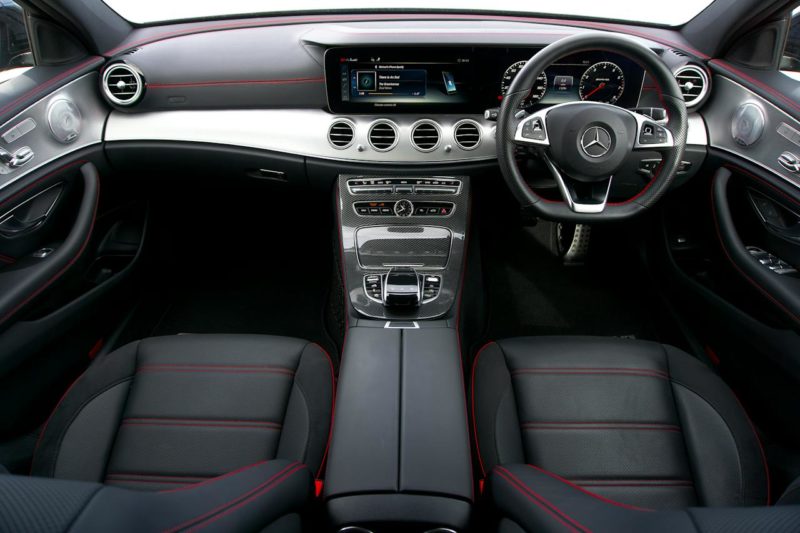
You can use that dashboard screen in the following ways.
Over the last ten years, car infotainment has seen significant transformation. Large touchscreens that can stream music have replaced hard buttons and CD players. Amazon, Apple, and Google have all entered the fray. Here’s a cheat sheet to help you understand the differences between the various systems.
Native Interfaces of Automakers
The operating system and hardware (such as the touchpad, controller knob, and center screen) that the automaker specifically created for your car are referred to as the “native interface.” While some have names (Ford owners use Sync, Jeep and Ram owners use Uconnect), many don’t.
Ford Edge 2021 with Ford SYNC® 4A.
Every model has its own peculiarities and layout, and user-friendliness plays a big role in whether or not a buyer is satisfied (or not, as many Lexus owners will attest). This is mostly due to the fact that automakers incorporate a lot of features into their infotainment systems.
Owners can choose from a variety of vehicle settings (such as lighting and door locking), make calls, pick a radio station, get GPS direction, keep an eye on the condition of the car, and frequently regulate the temperature within the cabin using that main screen.
You may search for destinations using built-in navigation systems without a smartphone thanks to external mapping services like Tomtom, Mapbox, or Garmin. However, the maps are frequently only as up to date as the most recent updates made to your car. Thankfully, automakers are keeping up with the times and are beginning to add cloud-connected navigation systems that work similarly to your phone to deliver real-time traffic and route updates.
A lot of OEM infotainment systems provide some degree of customisable functionality. Apps for podcasts and popular music, for example, are frequently added by users. Additionally, the majority provide the subscription-based satellite radio provider SiriusXM. You may use it to listen to more than 150 stations that offer a variety of ad-free content, such as podcasts, talk radio, sports broadcasts, music, traffic, and news updates. You can listen to a station from anywhere in the United States since its signal reaches the car from space rather than a terrestrial tower. Manufacturers frequently provide new car customers with a complimentary trial of SXM for a set period of time, typically three months.
Android Vehicle
A piece of software called Android Auto allows you to project or reflect some phone apps onto your dashboard. This prevents drivers from tinkering with or looking down at their electronics while operating a vehicle. From the car’s touchscreen, they can make and receive phone calls, send and receive text messages, use their preferred navigation software, and stream music (or use voice commands). The driver has to have an Android handset running 8.0 (Oreo) or later in order to utilize it.
To enable Android Auto, you may need to connect your phone to a designated USB connection on your car’s entertainment system. However, more sophisticated infotainment systems are capable of managing the wireless connection.
Apple CarPlay
An iPhone user’s version of Android Auto is called Apple CarPlay.
For many, if not most, consumers, CarPlay and its Android equivalent have become essential features, so it’s a little surprising that GM recently decided to discontinue the technology in upcoming EVs. A representative for the business stated to Reuters, “We don’t want to design these features in a way that are dependent on a person having a cellphone. We have a lot of new driver-assistance features coming that are more tightly coupled with navigation.” GM will offer native access to Google Maps and a few other apps, but customers are not buying into it.
Built-In Alexa
If Alexa is built-in to your car and you have an Amazon account, you may ask the virtual assistant to change the temperature inside the car, play a certain song from your preferred streaming service, add an appointment to your calendar, provide directions, and modify the stereo’s level. It’s more of a voice-activated assistant that can be accessed through an app on the manufacturer’s original interface than an infotainment system.
Built-In Google
Automakers are increasingly permitting Google to install its software in their vehicles. In contrast to Android Auto, a Google product, Google Built-In operates independently of your phone. Because it’s integrated, your dash display’s home screen will have buttons for Google Assistant, Google Maps, and Google Play. For example, Google Assistant carries out your voice instructions and listens to them, much as Alexa Built-In.
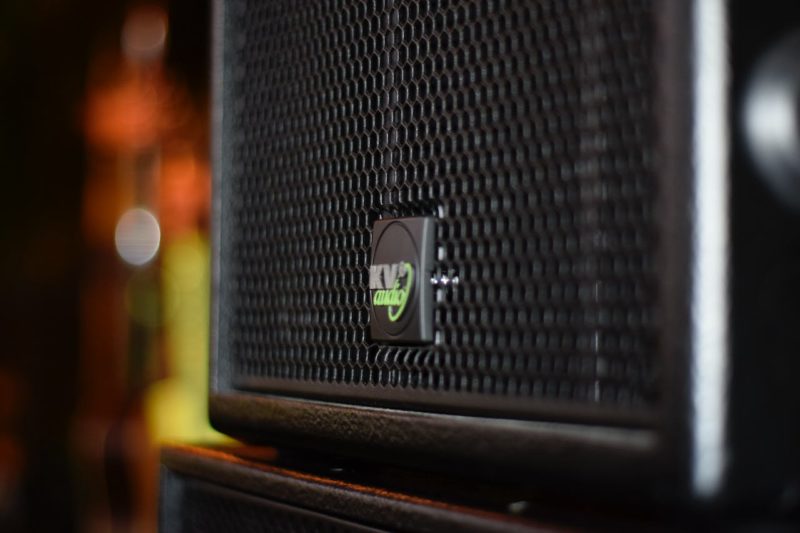
Increase the loudness.
A tailgate speaker is a must-have for any occasion, whether you’re planning a camping trip, hosting a block party, or just hanging out in the parking lot before the big game. A speaker can introduce the topic or get everyone ready for some karaoke. Our selections for the finest tailgate speakers are sure to delight you, regardless of what you need it for.
What Makes Tailgate Speakers Essential
A tailgate speaker is a great option for outdoor entertainment for a number of reasons.
The fact that tailgate speakers are portable is maybe their biggest feature. They are portable. The batteries used in today’s speakers can be recharged for up to 40 hours or are built-in. You have lots of time to play your preferred songs because of this.
You can take your portable tailgate speakers with you wherever you go. Take the speaker with you if you decide to exit the car and bring the music with you. Beyond just being useful for tailgating, portable speakers have other uses. They are suitable for a variety of occasions.
The fact that tailgate speakers frequently produce a louder, more focused sound than your truck’s speakers is another factor supporting their significance. The sound in your truck is still contained within the cabin, even with a fantastic system. Higher quality sound that can be projected in any direction is produced by a tailgate speaker.
Prior to Purchasing
Here are some considerations to make before you buy a tailgate speaker:
First, think about the speaker’s construction and longevity. If you’re in the market for a tailgate speaker, you should get one that can withstand weather conditions such as wind, rain, sun, and dampness. If you want your speaker to be resistant to rain and spills, you can choose a waterproof one. A waterproof speaker could be useful if you’re near a lake or swimming area.
Second, consider how you would respond to this question: to what extent do you pay attention to sound quality? Your preferred sound may vary depending on the genre of music you listen to, but it can also vary depending on whether you prefer a higher or lower bass level. Extremely bass-heavy speakers can produce a lot of low end, but they can’t deliver good mids and highs. Similar to this, certain speakers cannot handle the low end. You might also like a more evenly distributed sound throughout.
Thirdly, think about your system’s battery capacity. Certain speakers don’t need to be recharged after more than 10 hours of use. Nonetheless, the typical battery life of speakers is between five and six hours. Additionally, if your speaker has multiple functions like a karaoke mic, lights, a strong amp, or a loud volume, the battery life may drop significantly. The speaker maintains less charge the more power you drain from it.
The Best Tailgate Speakers, in Our Opinion
Waterproof Portable Bluetooth Speaker JBL Charge 3
For two reasons, the JBL Charge 3 Waterproof Portable Bluetooth Speaker is included on this list even though it does not strictly fit the definition of a tailgate speaker. It is well-known for being portable, to start. Secondly, its output is impressive enough to draw a small crowd around the tailgate. In addition, the Charge 3 is robust and waterproof. It is portable.
The Charge 3 can play music continuously for 20 hours without the need for a recharge once it is fully charged. You have a lot of choices for attaching up to three devices or additional speakers if the unit doesn’t provide you with enough bass. On this list, it can also be the least expensive tailgate speaker.
Soundboks 2 Wireless Speaker
You might wish to consider the Soundboks 2 Bluetooth Speaker if you really want your system to provide a “block party” sound. After the first charge, the speaker may operate at a moderate volume for up to 40 hours and at a high volume for 8 hours. The Soundboks 2 is possibly one of the loudest tailgate speakers available because to its 122DB maximum output.
Both customers and critics praise the speaker for its dependable Bluetooth connection and excellent music quality. A sturdy device that can withstand outdoor activity is provided by the metallic grill handles and all connections. At thirty-three pounds, it is deceptively small and light.
Pyle PSUFM1035A Wireless Audio System
The Pyle PSUFM1035A Bluetooth Speaker is jam-packed with features that make for an amazing party experience. It has a display screen, a remote control, flashing lights, high-quality sound, and seamless streaming from services like Apple Music and Spotify. Thanks to Bluetooth connectivity, it provides an entirely wireless experience.
With a built-in 10-inch woofer, the Pyle speaker delivers the low end along with 1,000 watts of power. But the bass doesn’t overpower the music, so your listening experience is more harmoniously balanced between high and low frequencies. Additionally, an SD card reader and FM radio are included. The Pyle speaker’s lack of a rechargeable battery is its lone drawback.
Portable Bluetooth party speaker QFX PBX-61081BT
The speaker configuration of the QFX PBX-61081BT Portable Bluetooth Party Speaker is the first thing that catches your attention. An 8-inch woofer is located in the center of the component, around by regular horn speakers, and topped with a tweeter atop the woofer. This produces a well-balanced sound that fills the space with bass.
The QFX speaker has two USB and SD card connectors, FM radio, and Bluetooth connectivity. The AUX port allows you to attach other devices. When completely charged, a battery can last five to six hours on average. Additionally, QFX has a microphone input for karaoke enthusiasts. The design of the speaker is completed by the foldable handle.
Party Rocker Max Speaker by Ion Audio
The Ion Audio Party Rocker Max Speaker is perfect for practically any social event, party, or outdoor gathering, as its name implies. Any event can have karaoke added to it thanks to the integrated microphone. With its 100 watt output, the potent party rocker provides you with plenty of power without distortion. All you have to do is turn it up to get the same excellent sound.
Up to 75 hours of music can be played on the Ion speaker by itself, or five hours if you add lights. If you would like to plug it into the wall, it also provides AC power. The 8-inch speaker has a broad EQ from top to bottom and strong bass. Ion upgraded the system with a remote and microphone.
GDI-EXBM901 Ecoxgear Portable Bluetooth Speaker
The high-end Ecoxgear GDI-EXBM901 Portable Bluetooth Speaker offers balanced sound, a long battery life, and portability. The system has built-in Bluetooth, so you may connect to any device or streaming service. There are numerous control settings available on the Ecoxgear speaker to assist you fine-tune your sound.
It has the best sound quality of any system we listed. It also floats on water and is completely waterproof. Built-in EQ settings, a robust frame, complete wireless functionality, and a remote control are among the features. It works flawlessly in any outdoor environment.
The portable Bluetooth speaker Aiwa Exos-9
The Aiwa Exos-9 Portable Bluetooth Speaker can be something to think about if elegance is more important to you than toughness. The Exos-9 is a fashionable and useful device that has received great ratings for both its design and sound. High-end components are seamlessly integrated by Aiwa to provide stunning highs, mids, and lows.
The portable system, weighing only 13 pounds, includes five excellent speakers, a 200-watt amplifier, onboard controls, a remote control, and an EQ that can be adjusted to your exact specifications. Read the instruction manual carefully though, as setting the EQ can be challenging. If not, the Exos-9 is ideal for your tailgating gathering.
High-Power Portable Bluetooth Speaker: Sony GTKXB90
The Sony GTKXB90 High Power Portable Bluetooth Speaker produces excellent low-end sound and can play songs with a lot of bass, including electronic, hip-hop, dubstep, club, and trap. To counterbalance the sound, the Sony speaker has a distinct mid- and high-range in addition to its ample bass.
Moreover, the sound quality of the GTKXB90 remains unchanged even at higher volumes. Numerous features, including a completely adjustable EQ, five hours of battery life, flashing lights, two woofers, and three tweeters, are packed into this speaker. However, take caution—the speaker is not watertight. So when the weather is nice, play it on the tailgate.
Every product on this page has been hand-picked by our editorial team, which consists of automotive enthusiasts. If you purchase anything using one of our links, SimpSocial may receive a compensation. Offers are subject to change without notice, even though the prices are correct and the items are in stock at the time of posting.

Vision coverage can occasionally be overlooked in the complicated world of insurance, taking a backseat to the more urgent need of dental and health insurance. However, as our eyes are the portals to the outside world, they must receive equal attention. Regardless of age, whether you are a student, an experienced professional, or a retiree, maintaining the health of your eyes is always crucial.
A comprehensive approach to managing your health can benefit greatly from a thorough grasp of vision insurance, especially in light of the potentially high costs associated with eye care. In order to provide you with the clarity you need to choose and optimize your policy benefits, this blog post seeks to explain the specifics of vision insurance.
Knowing About Vision Coverage
It’s crucial to comprehend what vision insurance is and how it functions within the larger context of your medical treatment before getting into the specifics.
IS VISION INSURANCE NECESSARY?
Yes, vision insurance can be cheap if you wear contacts or glasses, or if you have a history of eye problems. Nonetheless, a vision insurance policy might not be required if you don’t frequently visit an optometrist and don’t anticipate incurring large costs for eye care.
VISION INSURANCE TYPICALLY COVERED WHAT?
The majority of vision insurance policies pay for eye exams, prescription glasses and contact lenses, as well as discounted rates on corrective procedures or treatments. Some even provide reimbursement for frames and certain lens upgrades, such as photochromic or anti-reflective coating.
QUESTION: WHAT VISION INSURANCE PLAN IS BEST FOR ME?
Selecting an in-network provider first helps optimize your advantages. Recognize the terms and coverage limitations of the policy. Recall that gaining knowledge will enable you to maximize your insurance benefits.
Think about the eye care needs of you and your family before selecting a plan. Examine the available services, the network of providers, the simplicity of filing claims, and any endorsements or reviews. Are thorough ocular examinations included? What about glasses or contact lenses? Are LASIK and other eye operations discounted? Additionally, if you have a particular optometrist or ophthalmologist, always make sure they are part of the network.
VISION INSURANCE AND A VISION PLAN: WHAT’S THE DIFFERENCE?
In essence, vision plans provide pre-paid eye treatment. Benefits like discounted eye exams, glasses, and occasionally even LASIK are provided in exchange for a fee. On the other hand, vision insurance works similarly to health insurance in that you pay a monthly premium, and once you pay the deductibles, the insurance covers or lowers the cost of eye care services and eyewear.
The Various Kinds of Eye Insurance
There are various types of vision insurance that help defray the cost of regular checkups and corrective lenses. These are the principal categories of vision coverage:
Benefit Packages: This type of insurance is the most conventional. These plans have a premium, a deductible, and once the deductible is satisfied, the insurance pays all or most of the cost of your vision care. Exams, glasses, lenses, and potentially even savings on treatments like LASIK are all possible components of coverage.
Discount Vision Plans: These plans provide discounted rates on a range of eye care items and services, allowing you to pay for all of your goods and services rather than just a portion of them. The whole discounted sum is paid for out of your own pocket. Rather than a monthly premium, these plans frequently have a membership charge.
Managed Vision Care Plans: These programs resemble preferred provider organizations (PPOs) or health maintenance organizations (HMOs) in the context of health insurance. For a fixed price, you may usually obtain complete eye care treatments from a network of providers. While there may be some concessions for services rendered outside of the network, you will typically have to pay more out of pocket for them.
Group Vision Insurance: Usually provided as part of a benefits package or managed care plan, these optional programs are offered by companies. Generally speaking, this kind of vision insurance is more affordable because your company will often subsidize it.
Individual/Family Vision Insurance Plans: You can purchase individual or family plans if you work for yourself or if your company does not provide vision insurance. These might have higher rates than group vision insurance, although they are frequently comparable.
Policies for Riders: For an additional cost, you may be able to “ride” (or add) vision insurance to your primary health or dental insurance plan.
Think about things like the network of providers, monthly rates, out-of-pocket expenses, and the breadth of services provided while selecting between different kinds of vision insurance. Make sure the policy fits your demands and budget by carefully reading its specifics.
What is the cost of vision insurance?
Knowing how much vision insurance will cost you is essential to making sure you’re getting the most for your money. Like all insurance, the prices might differ significantly based on a number of variables.
How Much Group Plans Cost
Plans for Groups via Employers Group plans are frequently provided by businesses as perks, and they usually have lower costs for employees. The plans enjoy the advantages of economies of scale. The cost per person can decrease with the number of employees enrolled.
Premiums: The typical monthly premium range for group plans is $5 to $15. On the other hand, premium plans or those with extensive coverage may cost a little more.
Co-pays: These are little costs that you could be required to pay when you visit. For example, the co-pay for an eye checkup could range from $10 to $30.
Deductibles: There can be an annual deductible for some policies. You have to pay this out-of-pocket before your insurance starts to pay for the expenses. Deductibles can vary from several hundred dollars to zero dollars (in really generous plans).
The price of personal insurance
Private policies are available if your employer does not provide vision benefits, or if you would like more comprehensive coverage. This is an explanation:
Premiums: In general, individual policies cost more than those of groups. Depending on the provider and the extent of coverage, monthly premiums might range from $15 to $50 or more.
Variations in Coverage: Certain private insurance plans may provide benefits such as savings on LASIK procedures or even allowances for fashionable or designer contacts or frames.
Flexibility: Private policies may offer a wider range of optometrists or ophthalmologists and may impose fewer limitations on the kinds of contacts or eyewear you may select, even though the cost may be higher.
EXTRA EXPENSES OVER AND BEYOND PREMIUMS
When examining any vision insurance policy, keep the following additional aspects in mind:
Not from pocket Maximums: This is the most you can spend in a year before your insurance pays for all permitted expenses. This number is crucial to know, particularly if you plan to spend a lot on eye care.
Coverage Limits: A new pair of glasses may be covered annually by certain plans, but every two years by others. Recognize these boundaries to prevent unforeseen costs.
Exclusions: Certain items or procedures might not be covered. Certain specialist lenses or procedures may have an added price tag.
You can now see well.
The significance of maintaining good eye health is paramount in the modern, digital age when displays rule our lives and move at a rapid pace. Vision insurance is a commitment to put your eye health and, consequently, your general well-being, first. It’s not just a policy. A clean future or one clouded by unforeseen bills can be determined by having a strong vision insurance coverage, especially given the escalating prices of medical treatment.
The complexities of vision insurance may seem overwhelming at first, but with the correct information and viewpoint, you can properly weigh your options. We hope that this in-depth guide has helped you understand the benefits and specifics of vision insurance, enabling you to make wise choices for your family.
Answers to Common Questions
Frequently can I obtain new glasses?
New frames are usually covered by insurance plans every 12 or 24 months.
ARE FRAMES DESIGNER COVERED?
While some insurance plans may include a list of certain covered frames, others may give an allowance toward any frame. Verify the policy’s specifics at all times.
VISION INSURANCE: DOES IT COVER PHONE CALLS?
In general, yes. Plans usually cover the cost of replacement contact lenses or provide a discount. Some might offer a discount, while others might pay the full fee up front or annually up to a certain amount.
DO SUNGLASSES GET COVERED BY VISION INSURANCE?
If they are prescription sunglasses, they are frequently reimbursed or given at a reduced price. Non-prescription sunglasses, however, are typically not included in the package.
LASIK INSURANCE: DOES IT COVER?
While many vision insurance plans may not cover LASIK in full, they can offer substantial savings on refractive surgery. Always double-check with your particular policy.
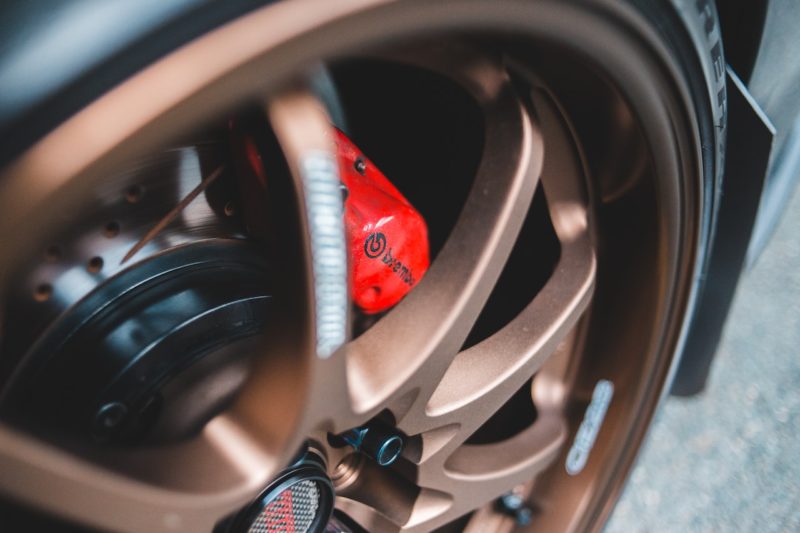
Getting Around the Vehicle Recall Maze
Have you ever opened your mailbox to see a menacing envelope from the manufacturer of your vehicle? Or you see red words on your screen, which you know can’t be a good omen, when you open your CarFax account to see when your car’s next maintenance is scheduled.
You are not in danger, so don’t worry. It could be a notice about a car recall. Recalls may seem like an unpleasant message, but they are actually the car industry’s method of ensuring that your vehicle stays as safe as possible.
REECODING AUTOMOTIVE RECALLS
Anyway, what exactly is a car recall? Consider it as an apology letter from the maker of your vehicle. They will issue a recall if they find that a component in your car isn’t operating at optimal efficiency, potentially endangering your safety. Usually, they are obligated to fix it at no further expense to you.
THE RECALL PROCEDURE
Have you ever wondered how a recall originates? Usually, it happens when a vigilant driver like you notices anything strange about your car or when the manufacturer discovers an issue during standard testing. If the National Highway Traffic Safety Administration (NHTSA) notices any patterns in customer complaints or testing, they may also initiate a recall (source: NHTSA).
What Takes Place If Your Vehicle Is Recalled?
Consider this: You recently got a notice about a recall. Next, what? Don’t freak out! Typically, you’ll be required to take your automobile to an approved dealership or repair facility, where they will replace the damaged part, resolve the problem, or perhaps even replace your entire car! And don’t forget, none of this will cost you a penny.
RECALLS’ IMPACT ON CAR VALUE
You may be concerned about the resale value of your car after a recall. Hey, but, don’t worry! Rarely does a single recall have a major effect on a car’s value. Indeed, a series of recalls could cause prospective customers to reconsider. Maintaining the value of your car can be achieved by promptly attending to recalls and doing routine maintenance.
RECLAMATIONS AND AUTO INSURANCE
How is your auto insurance doing? Positive news for you now: Recalls typically don’t result in higher auto insurance premiums. On the other hand, your insurance premiums may increase if you choose to disregard a recall and an accident results from the recall issue. When you receive a recall notice, you should bring in your car as soon as possible for this reason.
HANDLING OUTGROWN RECALLS
Have you let a recall to expire after letting it gather dust? Recalls technically never expire, but free remedies are usually only offered for ten years after the recall is issued. After then, the cost of any repairs may be borne by your wallet (source: NHTSA).
Handling the Recall’s Aftermath
You still need to make sure your car is prepared for driving after a recall is over.
Ensuring Accurate Examination and Maintenance
Verifying that all recall repairs were completed appropriately is crucial once your car has undergone them. Request a repair paperwork detailing the parts that were replaced, mended, or altered. This will help verify that the recall issue was appropriately handled in addition to acting as a record.
CHECKING IN WITH YOUR SUPPLIER
After the repair, maintain contact with the manufacturer of your vehicle. Please get in touch if you have any concerns regarding the quality of the repair or think the problem wasn’t completely fixed. They have an obligation to ensure the safety of your car and that the recall problem has been resolved.
The Ripple Effect of Recall: Purchasing and Selling
If your car has been involved in one or more recalls, you might be worried about what will happen if you ever decide to sell it. You might also be asking if purchasing a used automobile should take recalls into account.
Purchasing a used car with a history of recalls
It’s a good idea to research a used car’s recall history before purchasing. By using the vehicle identification number (VIN) of the vehicle, you may verify this with the NHTSA. If the recalls were handled promptly, a recall history should not be cause for concern. Recall that if recalls are ignored, there may be a risk to your safety and you may have to pay for any necessary repairs.
PURCHASING A CAR AFTER A RECAL
Considering selling your vehicle after the recall? Tell the truth about its history of recalls. Present repair records to prospective purchasers as proof that all recalls were appropriately handled. In addition to fostering trust, transparency may offer you a competitive advantage in the used automobile market.
Recognizing Possible Safety Issues
What happens if you identify a possible safety issue but there isn’t a recall? Here is a list of nine typical safety flaws to watch out for, along with an explanation of why each is risky:
Bad Brakes: When applying emergency brakes, it can be dangerous if your brakes are not responsive.
Fuel System Defects: Vehicle fire danger can be raised by leaky fuel systems.
Engine Cooling Issues: Engine fires or total engine failure can result from overheating.
Electrical Problems: Wiring errors can result in car fires or the inability to operate necessary features like the wipers or headlights.
Unstable Steering: A problem that could lead to a loss of vehicle control is indicated by difficult steering.
Problems with the transmission: Sudden shifts in gear might cause the car to lose control.
Inadequate seat belts may not be able to keep occupants safe in the event of an accident.
Defective Airbags: Serious injuries can result from airbags that do not deploy in a collision.
Structural Defects: In the event of an accident, a car with a poor structure may cause more injuries.
Tire Defects: Tire defects can result in blowouts, which can subsequently cause catastrophic collisions.
Faulty Suspension Components: Suspension issues raise the possibility of an accident by affecting the vehicle’s handling and stability.
Modern cars are increasingly dependent on electronics, therefore malfunctions in functions like lane-keeping assistance or cruise control can be very dangerous.
Exhaust System Leaks: If there are leaks in the exhaust system, dangerous gases may enter the car’s cabin and endanger passengers’ health.
Failure of the Windshield Wipers: When driving in the rain or snow, poor visibility caused by malfunctioning wipers can be quite hazardous.
Malfunctioning Sensors: Because there are so many sensors in modern cars, including ones for blind-spot detection and parking assistance, when they malfunction, it can give drivers a false sense of security and cause accidents.
Child safety seats and locks that are defective may not provide enough protection for kids in the event of an accident.
NOTIFYING OF POSSIBLE SAFETY IMPAIRMENTS
If you discover a possible safety flaw, you should notify the NHTSA right away. They may issue a recall after conducting further investigation and discovering a tendency. Recall that being vigilant can serve as the first line of protection for everyone’s security.
At first, car recalls may seem like an unnecessary inconvenience. However, keep in mind that your safety is their top priority. Therefore, don’t be alarmed the next time you get an envelope from your automobile manufacturer that appears official; instead, interpret it as their pledge to keep you safe while driving. After all, taking care of a small inconvenience now can save you from having to deal with bigger problems later!

Our teeth frequently receive less attention when it comes to health; that is, until a toothache strikes and the dentist bill shows up in the mail. But why hold off on taking action till there is an issue? Dental insurance offers a solution, protecting our teeth and our pocketbooks at the same time. It’s peace of mind more than just coverage. This blog post will fill in the blanks, so you’re prepared to make the best choices for your oral health, whether you’re new to dental insurance or just want to brush up on the fundamentals.
Knowledge of Dental Insurance
Dental insurance is a means to safeguard your healthy teeth and gums in addition to being a financial instrument.
The high expense of dental care is mitigated by dental insurance. Regular premium payments are made by policyholders in return for specific dental benefits. Dental insurance has copays, deductibles, and coverage restrictions, much like health insurance.
Plans may include a fixed percentage of services, ranging from larger operations to routine cleanings. It is usually advisable to check co-pays before choosing a plan, even though some treatments can be fully covered.
WHAT IS THE COUNT OF DENTAL INSURANCE?
The cost of your dental insurance may vary depending on the extent of your plan’s coverage, your location, and the number of beneficiaries. Monthly costs for an individual might typically range from $20 to $50, and family plans could cost between $50 and $150. When choosing a plan, it’s critical to consider both monthly costs and out-of-pocket expenditures.
Which of the Various Dental Insurance Plan Types Is Best For You?
Anybody might get overwhelmed by all of these abbreviations, which range from HMOs to PPOs. There are many different dental insurance plans available, so it might be challenging to choose the right one for you. Find the dental insurance plan that best suits your requirements.
MO Plans for Dental Health Maintenance Organizations
Members of HMOs, which are network-based plans, must select a primary care dentist (PCD). This PCD manages your dental treatment and, if necessary, makes specialist referrals. You can only see suppliers who are in the network, even if monthly charges are frequently less expensive. When you go out of network, you are responsible for covering the entire cost.
Dental PPO Plans: PREFERRED PROVIDER ORGANIZATION
PPO plans provide a tiny bit more leeway. While you are free to visit any dentist you like, you may save money by using in-network providers. Although PPO plans have higher premiums than HMOs, the more choice they provide more than makes up for it. Furthermore, the plan still pays a portion of the cost even if you choose to see a dentist who is not in its network.
SPECIALIST PROVIDER ORGANIZATIONS
PPO and HMO features are combined in EPO insurance. Although they allow greater freedom in selecting a dentist, they often don’t pay for visits to non-network dentists unless an emergency arises. EPOs often have slightly lower premiums than PPOs, but when choosing a provider from the approved list, patients are required to pay the whole amount.
Plans for Direct Reimbursement
Direct reimbursement programs are a welcome change from network-based options. Rather, you pay for the dental treatment up front, and your insurer reimburses you for a portion of the cost. Depending on the service you are buying, the reimbursement percentage may change. It’s a windfall for those of us preferring choice above structured networks.
Plans for Dental Indemnity
Dental indemnity plans are known for their unwavering independence and don’t bother with networks. After paying for treatments directly, policyholders receive reimbursement from the insurance provider. Although the deductible and premiums are somewhat higher, some people find it to be a good option because they can choose any dentist without worrying about the expense.
What Your Dental Coverage Does and Does Not Include
When it comes to oral health care, dental insurance serves as a safety net. However, there are some gaps in every net. Which operations are covered and which ones could require you to dig a little deeper into your wallet?
The majority of dental insurance policies categorize coverage according to the kind and intricacy of the service. This is an explanation:
Regular and Preventive Services: These usually consist of bitewing X-rays, routine examinations, fluoride treatments for kids, and biannual cleanings. These therapies are frequently fully covered because of their significance in averting serious dental problems, particularly if you see an in-network dentist.
Basic care: These include procedures like fillings, extractions, periodontal therapy, and frequently root canals. They are a step above preventive care. Even though they are frequently covered, cost-sharing arrangements are typically included. You will be responsible for the remaining balance if the insurer only pays between 50% and 80% of the total.
Major Services: These include more involved and costly operations including dentures, crowns, bridges, and occasionally orthodontics or implants. Cost-sharing is also applicable to major services; insurance usually pays for around half of the total cost. It’s crucial to be aware of any waiting periods or other limits in your policy as certain plans can impose one for these services.
WHAT IS NOT OFTEN COVERED?
There are exclusions in many dental insurance plans, albeit each policy is different. Generally speaking, insurance companies may refuse to pay for cosmetic operations including veneers, tooth whitening, and full mouth reconstructions that are not related to disease or injury. Furthermore, certain treatments, such as adult orthodontics or specialty operations, might not be covered at all or only partially. It’s essential to thoroughly read your insurance or see a representative in order to comprehend any limitations or exclusions.
The Final Word
One of the first things that people notice about you is your smile, and the cornerstone of excellent dental health lies behind every beautiful smile. Dental insurance is an essential instrument in the pursuit of flawless teeth and healthy gums, despite the fact that it may seem confusing at first due to its technical terms and abundance of alternatives. It could be too expensive to navigate life without dental care, just as you wouldn’t drive a car without insurance. Thus, keep in mind that making an investment in your smile now saves you more than simply money, whether you’re selecting a plan, considering coverage, or calculating expenditures.
Additional Frequently Asked Questions about Dental Coverage
Sorting through what’s covered can be confusing. So let’s dispel a few myths.
ADVANCED DENTAL INSURANCE: WHAT IS IT?
Private dental insurance is defined as plans that are purchased directly from the insurance provider, eschewing employer-sponsored programs. It’s appropriate for independent contractors or people without employer-sponsored insurance.
ARE GROUP OR INDIVIDUAL DENTAL PLANS BETTER?
Group plans are bulk policies that are typically sponsored by employers and offer lower rates due to collective bargaining, whereas individual plans serve lone beneficiaries.
Supplemental dental insurance: What is it?
Supplemental dental insurance serves as a backup safety net, covering gaps in the original policy’s coverage. It acts as a safety net against unforeseen dental expenses that can surpass standard coverage limitations.
DENTAL CLEANINGS WITHOUT INSURANCE: HOW MUCH DO THEY COST?
Dental cleanings without insurance might cost anywhere from $75 to $200 on average. But costs can differ depending on where you live and which dentists you see.
DENTAL X-RAY Expenses Without Insurance: How Much?
Dental X-ray costs vary widely by area and facility, ranging from $50 for a single X-ray to $250 for a full-mouth series.
Describe co-insurance.
Coinsurance is the portion of a dental charge you’re responsible for post-deductible. If the total cost of your dental care is $100 and your coinsurance is set at 20%, you will pay $20 out of the $100, with the insurance covering the remaining amount.
DO IMPLANTS GET COVERED BY DENTAL INSURANCE?
Even though they are becoming more and more common, not all insurance plans approve implants. Implants are considered necessary by some modern policies, particularly in the case of preserving jaw bone following tooth loss. They could be overlooked by older policies. Always go through the details of your plan.
DO BRACES GET COVERED BY DENTAL INSURANCE?
Orthodontic treatment is typically a separate category. While orthodontic coverage is provided by certain insurance plans, braces may not be covered at all by others or may require an additional rider. Frequently, there is a maximum coverage limit or an age restriction.
WISDOM TEETH REMOVAL COVERED BY DENTAL INSURANCE?
Wisdom teeth can be troublesome for a lot of people. Many insurance policies pay for some of the cost of a removal if it is determined to be medically essential rather than for aesthetic or orthodontic reasons.
DENTAL INSURANCE: DOES IT INCLUDE VENEERS?
Though usually seen as a cosmetic surgery, veneers seldom have extensive coverage. Policies may provide partial coverage if veneers are used to repair a tooth’s function in addition to its attractive appearance.
ARE CROWNS COVERED BY DENTAL INSURANCE?
Crowns are often covered, albeit this depends on why the patient needs one. In case the procedure is restorative, such as filling a tooth after a root canal, you will probably be compensated. But, you might have to pay for the complete procedure if it’s just cosmetic.
ROOT CANALS ARE COVERED BY DENTAL INSURANCE?
In many policies, root canal therapy is classified as a “Major” or “Basic” service. The insurance may cover a sizeable portion, typically between 50% and 80%, even though it is typically not 100% covered.
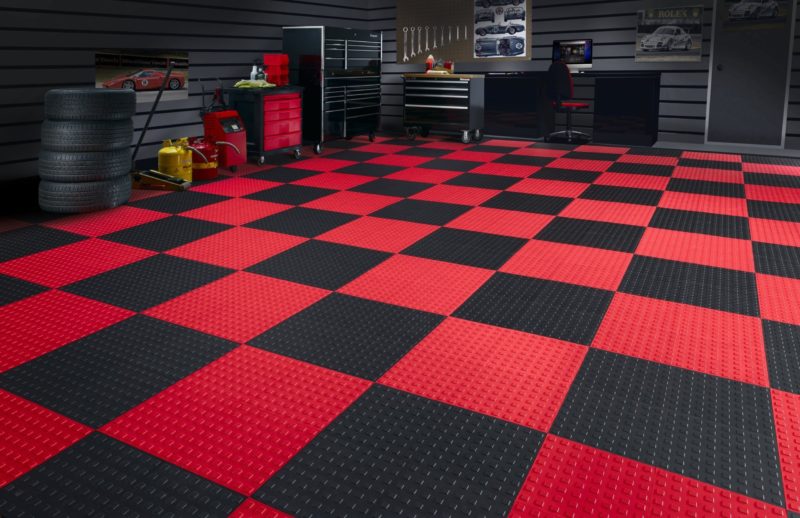
Maintaining a clean and organized car interior.
You will enjoy your garage much more if it is kept neat. It is a place of safety where you may retreat from the stresses of the outside world. Consider installing a garage floor mat if you deal with water spills, change oil frequently, or walk through a lot of muck. Garage floor mats shield your priceless floor, preventing stains.
How Garage Floor Mats Are Used
A garage floor mat can be used for several things. If you keep a car in your garage, it’s a wonderful place to park so that your tires don’t track dirt or tread lines into the floor. Additionally, mats are excellent in collecting spills of various kinds, such as oil spills and unintentional brake fluid jug spills on the ground.
Furthermore, garage floor mats reduce noise and stop echoes in your garage. They also assist keep the concrete somewhat warmer in the winter, which may help relieve some of the chill in the air.
What to Look for in Mats for the Garage
You should take a few factors into account when choosing a garage floor mat. The first thing to think about is important. Vinyl, foam, or some sort of cloth are used to make most mats.
Vinyl mats are waterproof, non-slip, and frequently easy to roll out.
The interlocking tiles that make up foam matting must be installed one at a time. They do, however, provide better cushioning.
Since fabric mats are the most absorbent, they are ideal for garages where accidents frequently occur.
Additionally, you should look for a mat with strong adhesive technology. The majority of high-quality mats have a backing that prevents slippage or skidding, which helps the mats stay in place when you’re driving over them. If that doesn’t work, you could even want to fix your mat with Velcro or double-sided tape.
Consideration should also be given to texture, particularly if your garage has other items on wheels like cabinets or chairs. Make sure the mat you choose doesn’t make rolling these kinds of things difficult.
Prior to Purchasing
To determine the size mat to purchase, measure the size of your garage. Additionally, think about the sections of your garage that you would like to cover. Would you like a pad to sit on in your car? Is your workbench the only area you want covered? This will assist you in selecting the appropriate size. If the size you require isn’t available, you might be able to get a custom order or have a larger mat cut to suit.
Consider adding additional protection for your garage floor before installing your floor mat. Investing in an epoxy coating for your floor can significantly prolong its appearance, particularly when combined with a high-quality floor mat.
The Best Garage Floor Mats, in Our Opinion
The Drymate OSM2936C Charcoal 29 x 36 inch Oil Spill Mat is the best value garage floor mat.
Spending a small amount of money on a garage floor mat? The Drymate OSM2936C Oil Spill Mat is an excellent option and our budget pick. Because of its absorbent polyester fiber construction, spills and leaks are stopped before they reach the lower floor. Additionally, the mat has a waterproof backing, so even the largest spill won’t seep through. This mat even has a slip-resistant pattern on the back to assist hold it firmly in place. Do you not think the 29 x 36 size will fit in your room? Additionally, the mat is available in three different sizes: 30 x 58, 36 x 60, and 54 x 72, so you should be able to select the one that works best for you.
ProsourceFit Puzzle Exercise Mat with EVA Foam Interlocking Tiles is the best tiled garage floor mat available.
The Prosource Puzzle Exercise Mat, EVA Foam Interlocking Tiles are an excellent option for the hard concrete floor of your garage since interlocking tiles provide additional padding to rough areas. Six ½-inch-thick tiles totaling 24 square feet of covering are included in this package. To make the completed mat appear polished, you will also receive 12 edge pieces. High-density EVA foam used to make each mat helps release pressure points on your back and feet. The tiles are simple to put together; just lock them into place, and you’re set to go. Their water-resistant coating should give you ample time to clean up spills before they cause a problem, and their textured surface keeps them from sliding. Do you require additional coverage? There are also choices of 48 or 144 square feet.
IncStores Standard Grade Nitro Garage Roll Out Floor Protecting Parking Mats are the best vinyl floor mats available.
Try the IncStores Standard Grade Nitro Garage Roll Out Floor Protecting Parking Mats for a more conventional garage floor mat that rolls out and is ready to use. It allows you to personalize your garage to your liking with a wide range of sizes and color options. This mat is fantastic since it is slip-resistant and waterproof, so you won’t have to worry about spills leaking into the floor or the mat moving. Depending on your needs, you can select from four different tread patterns: the ribbed pattern is good for water drainage, the coin pattern is good for slip resistance, the diamond plate pattern is good for a minimalist look, and the textured pattern provides the smoothest surface for rolling chairs or cabinets.
Every product on this page has been hand-picked by our editorial team, which consists of automotive enthusiasts. If you purchase anything using one of our links, SimpSocial may receive a compensation. Offers are subject to change without notice, even though the prices are correct and the items are in stock at the time of posting.
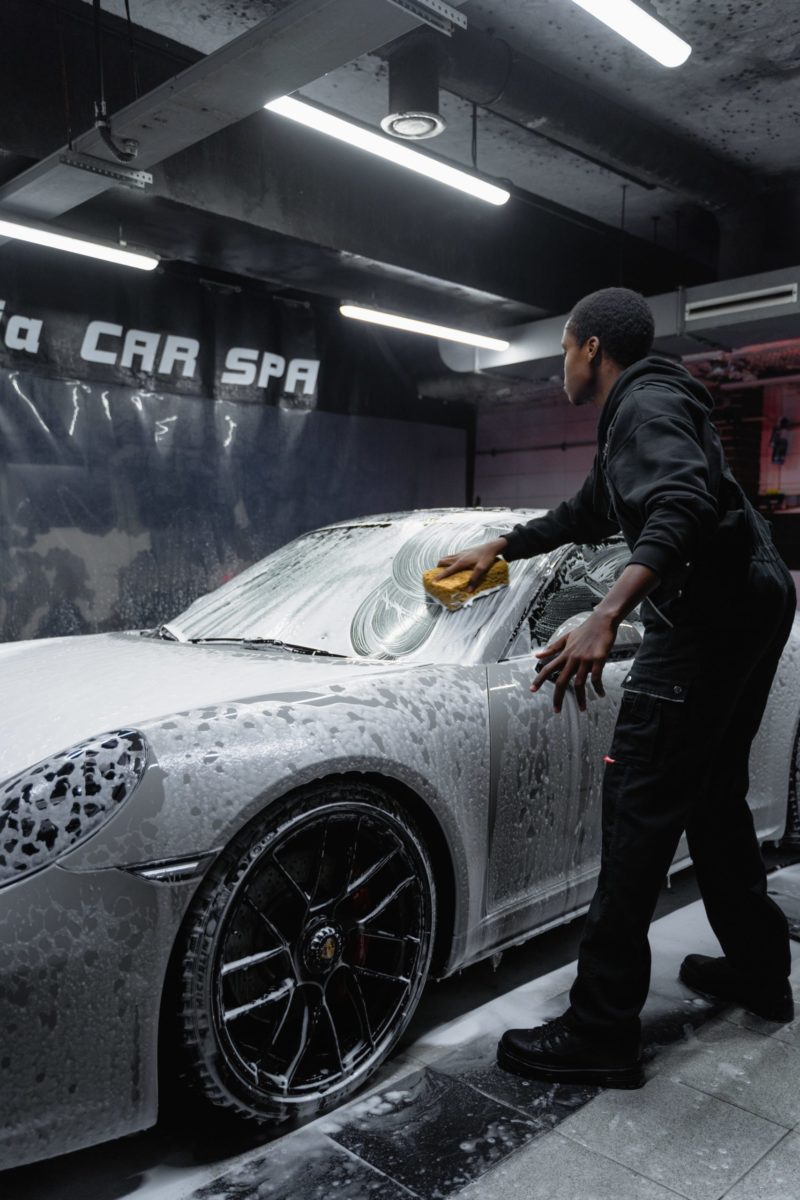
Bring the sense of a brand-new car back.
A new automobile is adored by all. Perhaps it’s the fresh automobile scent, the precise handling, or the flawless paint and upholstery. Even though getting a new car is exciting, you can still get the same thrill out of your current vehicle. You can make your car look almost brand new with a little elbow grease and knowledge.
1. Make sure it’s cleaned properly
Make sure to thoroughly clean your car’s inside and exterior before making any changes. Your car gets dirtier the more you drive it. Occasionally, a thorough cleaning is sufficient to expose the glossy coating and wheels that were concealed by a layer of filth and grime.
However, if you truly want your automobile to look brand new, you might choose to get it professionally detailed. For a long-lasting look, this means having the outside waxed and polished, or perhaps ceramic coated. If you’re not impressed with the external detail work, an inside detail will definitely make a big impact. A deep cleaning of the upholstery will leave the interior smelling and looking brand new.
2. Retouch the Paint
It’s a tall task to keep your car’s outside immaculate. The paint on your car will eventually crack or scratch unless it is kept in a bubble. Small defects can frequently be touched up at home, but taking your automobile to an auto body shop is a costly remedy for any cosmetic faults. In as little as an afternoon, you can remove the majority of rock chips and minor scratches from your paint with an automobile touchup paint kit.
3. Perform an Engine Tune-Up
Your car can benefit from a tune-up if it’s running a little rough. All of the parts in your car were brand-new when it was built. The wear and tear of components like gasoline, air, and spark plugs from miles driven results in a reduction in engine performance. The good news is that you can get your engine running like new again by replacing these inexpensive parts.
4. Drain the Liquids
It’s likely common knowledge that changing your car’s engine oil on a regular basis will keep it running like new, but there’s more to keeping it that way. Various fluids have an impact on how well your car performs. Many of these fluids deteriorate with mileage, so it’s critical to replace them on time to maintain optimal vehicle performance. The following frequently disregarded fluids could improve the driving dynamics of your car:
* Brake Fluid: Replacing your brake fluid will help your brakes become more predictable and responsive by eliminating a mushy pedal.
* Steering fluid: Maintains the quiet operation and proper operation of your power steering system.
* Transmission Fluid: Keeping the transmission’s fluid fresh will ensure quiet and seamless gear shifts.
* Differential Fluid: Changing the differential fluid keeps any limited slip differentials operating as intended and minimizes possible gear whining.
* Engine Coolant: Changing out old coolant keeps impurities and corrosion from accumulating inside the engine. Fresh coolant also aids in avoiding overheating problems.
5. Repair Your Interior
Because the interior is brand-new and the seat cushions haven’t worn out from years of use, a new car often feels fantastic to drive. Having worn-out steering wheels, broken shift knobs, or ripped seats changed or reupholstered is one way to bring back the feeling of a brand-new car inside your vehicle. But be ready to shell out some serious cash—automotive upholstery can get pricey very quickly.
Finding replacement interior parts in good condition from automobiles that are being “parted-out” can be a less expensive option. Your car’s general driving experience will be enhanced by cleaning any inside objects that you touch, as these are likely to show signs of wear.
6. Change a Damaged Suspension
Your car’s suspension probably needs some TLC if it has more than 70,000 miles on it. Most of the time, upgrading your suspension with new shock absorbers will extend its useful life. New shocks will be able to absorb road imperfections and improve handling at turns. To take it a step further and give your car a brand-new ride and handling, think about replacing any worn-out ball joints or bushings as part of a suspension overhaul.
7. Get a wheel alignment and install new tires.
Your car’s wheels and tires are what attach it to the road. Sadly, not every road is perfectly smooth, thus your tires and wheels may quickly wear down. If your tires are nearing their end of their useful life, replacing them will greatly improve your car’s ride quality. In order to ensure even tire wear and avoid steering pull in one direction, you need also have your wheels aligned before installing new tires.
If you’re want to go above and beyond, think about getting your wheels refinished. Slight bending may occasionally result from large potholes in the road, or your wheels may have minor curb damage from a hasty parallel parking job. Reputable wheel repair companies should be able to get your wheels back to like-new condition for a lot less money than they would charge for new ones. Additionally, a lot of them provide mobile services.
Continue to Feel Like a New Car
You now know how to restore your vehicle to like-new condition! Your present vehicle can be restored to look and perform like the day it was purchased with a little TLC and preventative care.

Parking cars isn’t the only use for a garage.
That building at the end of your driveway may be so much more than just a place to store your sheetmetal with a little imagination and a modest budget. Making it a welcoming spot for spectators on game day could help you get to know your neighbors better. Alternatively, you may gather your supple friends and arrange a yoga class on the slab with video instruction. All you need is some contemporary technology and folding chairs to turn your garage from an unpractical parking lot into a functional social or personal area.
Include WiFi
It’s unlikely that anyone will want to spend a lot of time in the garage if your internet connection doesn’t get there. Thankfully, there’s a simple method to extend the life of a dead zone: Upgrade to a mesh Wi-Fi setup, where a satellite extender or router is connected to one or more of them. By transmitting the connection to various rooms of the house—or, in this example, the garage—the extenders function as lone boosters. A basic setup should cost approximately $200. It will cost more the higher the specifications (bitrate, coverage area, etc.) and the more satellites you have.
Install a TV
You need a large TV whether you want to use it for workouts with a virtual coach, watching games with friends, or creating a mini drive-in theater in your garage. You might be able to live without a streaming device if you purchase a smart one. But then again, maybe not. Spend a reasonable amount of money on an Amazon Fire Stick, Apple TV, Chromecast, or other device if you enjoy the ease of a recognizable interface and the ability to access a large selection of apps that the TV does not.
The TV’s placement is the next thing you need to consider. It needs to be well out of the way of everything you keep in the garage, including your cars. If your available space is restricted, think about getting an extensible mount. One that slides, tilts, and swivels the TV in multiple directions is available, as is one that mounts to the ceiling. Just be sure to find a stud for it.
One more thing: If you intend to leave the TV in your garage all year round, you should verify the TV’s permitted operating and storage temperatures (as well as the humidity range) if your garage is uninsulated, as most are. For many models, the garage temperature should not drop below 40 degrees before turning on the TV; if the thermometer reads minus, it’s time to move the flat-screen inside.
Consider Sound
An echo chamber can exist in a garage. Consider installing a soundbar that connects to your TV or a couple wireless Wi-Fi speakers to enhance your audio experience. Additionally, you may improve the acoustics of the room by hanging a few blankets on easily adjustable tension rods or adding some sound-deadening panels to the inside of your garage door.
Invest on foldable chairs.
The finest type of seating for garages is one which is stowable. In this manner, you won’t have to move furniture about the house whenever you need to host visitors, nor will a pile of lawn chairs take up precious garage space. Purchase a set of movable ones. To keep the floor clear, collapse and place them away when not in use, or hang them from a wall hook.
Upgrade the Intelligence of Your Garage Door
Perhaps while you’re out running errands, your neighbor would like to drop off a care box. Perhaps the dog walker misplaced their key? Or maybe you just want to check to see whether you left the door open. You can use a $50 device to link your garage door to the internet and operate it remotely. Many of these retrofit gadgets integrate with your virtual assistant—Alexa, Siri, or Google—to make things more simpler.
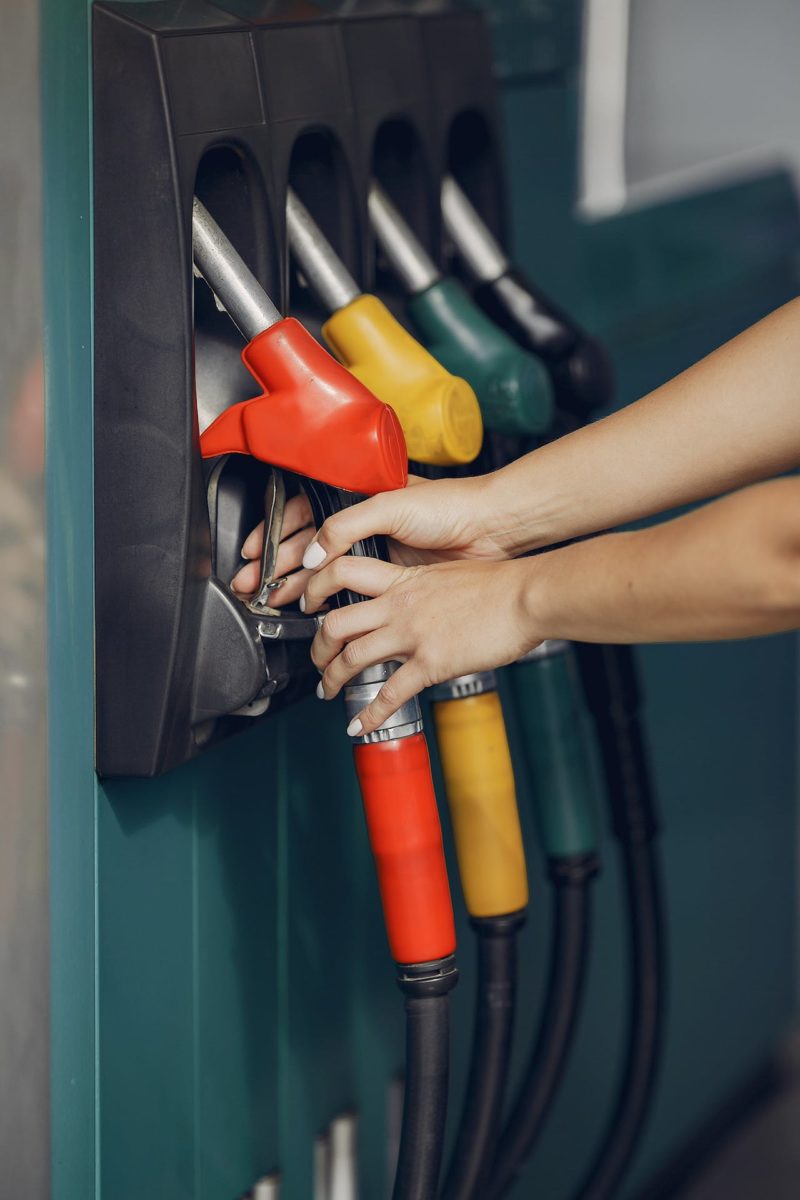
Ever ponder what makes regular gas different from premium gas? We go over the main distinctions and which is ideal for your car.
While most automobiles use regular, others need premium. There is some confusion regarding the differences between these two kinds of gasoline, which has resulted in some unnecessary expenditure at the pump. Continue reading if you’re unsure about what to put in your car’s gas tank. Your pocketbook may appreciate it.
What distinguishes standard gas from premium gas, then?
In most areas, regular gas has an octane rating of 87, whereas premium gas frequently has a higher rating of 91 or 93. Higher octane fuels are able to withstand increased compression levels before exploding. In essence, the chance that a detonation may occur at the incorrect time decreases with increasing octane grade. Sometimes, this kind of thing won’t damage your car. On the other hand, if it occurs frequently, the performance of your engine may degrade more quickly.
For optimum performance and fuel economy, engines with high compression ratios or turbochargers frequently need high octane gasoline, which is available in premium gas. Still, the vast majority of modern cars are designed to run on ordinary gas.
If standard fuel will do for your car and premium is not needed, use it.
For something you don’t need, why spend a lot of money? Premium gasoline is roughly fifty cents more expensive per gallon than normal and has no effect on vehicles that aren’t able to use it. The Federal Trade Commission states in a consumer advisory that there is typically no benefit to using gasoline that is higher in octane than what the owner’s manual suggests. Your automobile won’t run cleaner, go quicker, get better mileage, or perform better thanks to it.
The detergent chemicals in your fuel, which help clean your engine and maximize performance, are significantly more significant than the octane rating. Every merchant uses a different combination of additives that are applied to all grades. For instance, Chevron offers Techron in both normal and premium gasoline.
Some have higher standards for themselves when it comes to additives. The Top Tier Gasoline standard was developed with assistance from BMW, General Motors, Honda, Toyota, Volkswagen, and Audi. It requires a higher percentage of detergent additive than the EPA minimum criteria. They assert that engine parts, such as fuel injectors and intake valves, may accumulate more deposits when detergent additive concentrations are lower. Emissions may rise and engine performance may be decreased as a result.j
Fill up with premium if your car needs it.
Higher octane fuel is usually needed in engines with a high compression ratio in order to attain the desired level of performance, fuel efficiency, and emissions. Do not cut corners if your car needs premium gas. Although you may save money on gas, the power and fuel efficiency of your car may decrease. When it comes to cars with accessible turbocharged engines, this can really make a difference.
What happens if the premium gas that your car needs isn’t available? While low-octane fuel may cause engine knock in older vehicles, contemporary vehicles are fitted with sensors that are monitored by the engine computer to help prevent knock and consequent engine damage. We don’t advise testing your car frequently, but it should be OK to run on normal once in a while as the engine’s computer can adjust the ignition timing.
A modern vehicle’s ECU (Electronic Control Unit) can recognize and adapt for varying octane levels when you use fuel that isn’t as high or as necessary. It’s likely that when CO2 emissions rise, your horsepower and MPG will decrease. You get what you paid for in this case, even though you might save money on gas.
You can choose to stick with premium if your automobile only suggests that.
The Ford F-150 and Mazda MX-5 Miata are two examples of cars where automakers advise using premium gas but do not mandate it. According to AAA research, these cars’ performance and fuel efficiency somewhat increased when they were running premium petrol. Premium petrol can highlight the intended features of your vehicle, whether you drive a luxury or performance car.
But you can run on ordinary if your owner’s handbook states that “premium fuel recommended.” Commuters trying to go from point A to point B might not notice or care, depending on what and how they drive. It all boils down to personal preference in the end. Your vehicle, your guidelines.
Do you need suggestions for fuel-efficient cars?
It can be challenging to investigate every car that is available for sale, especially with gas prices rising. Check out these vehicle choices that use little to no petroleum to make things easier!

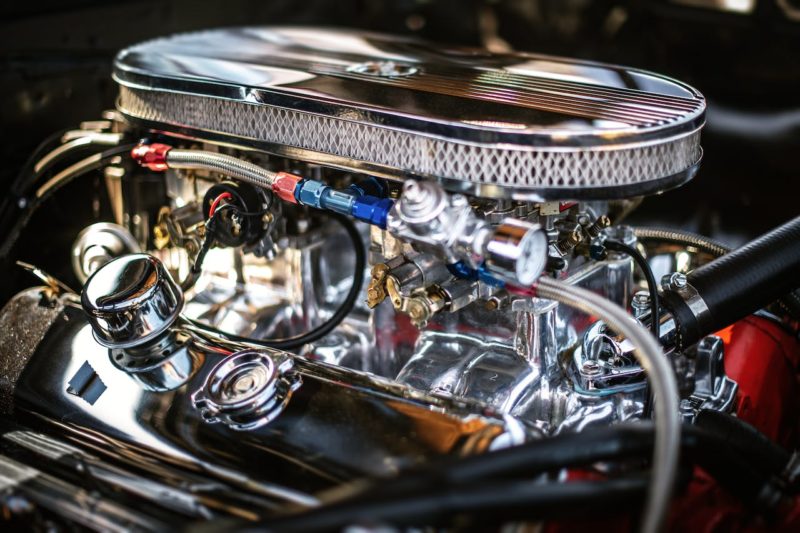
The selection of cars eligible for tax credits has drastically decreased.
The United States, Canada, or Mexico must be the assembly location of the qualified automobiles in order to comply with the new regulations. However, the rule was intended to make that provision effective on the date the President signed the law, or the “enactment” date, which was August 16, rather than on January 1st, when the remainder of the plan goes into effect.
So the majority of brand-new, clean automobiles and trucks will be more expensive to purchase?
On that one, the jury is still out. Under the new program, automakers whose vehicles are no longer eligible for tax credits may choose to decrease their prices or provide their own incentives in an effort to increase sales. But the majority assert that they currently lose money on practically every EV they sell.
How can I locate the manufacturing location of a car?
The day after the measure was signed, the IRS released a list of EVs and PHEVs that satisfy the North America assembly criteria. Up until January 1st, such models remain eligible under the current tax credit program rules.
There are only 16 models on the list out of 65 that met the requirements prior to August 16.
Customers must verify a vehicle’s vehicle identifying number, or VIN, to be certain it qualifies for the tax credit right away because some of those models are built in multiple locations, further complicating matters.
The number is affixed to the car permanently, usually on a plate that is visible through the windshield. It also needs to be on the window sticker.
Customers can utilize the Transportation Department’s VIN Decoder website to view the name and location of the facility where a car was produced; this information appears on the final line of the information that appears. As a result, you can use a smartphone to look for a certain VIN while you’re in the dealer’s showroom or parking lot.
What tax credit is available for a clean car that was built in North America?
The maximum is $7,500, and it now covers fuel-cell vehicles, or FCEVs, which were previously ineligible for the previous year, as well as plug-in hybrid electric cars, or PHEVs, which frequently had lesser incentive amounts under the current model.
The tax credit is divided into two $3,750 portions as of January 1.
How is that split operating?
An electrified vehicle must have some of its battery minerals mined or processed in the United States or one of the countries with which the United States has free trade agreements, after fulfilling the North American manufacturing requirement. Alternatively, minerals from discarded batteries in North America can be used. That amounts to half of the maximum $7,500.
The remaining half of the battery requires that all of its parts be produced or put together in North America. According to the regulation, automakers must demonstrate that at least 40% of a model’s battery-critical minerals come from recognized countries in order for the model to be eligible for half of the clean car tax credit from January 1. This increases annually by 10 percentage points to reach a maximum requirement of 80% by 2028 and beyond.
Receiving credit for fulfilling one set of requirements does not rely on fulfilling another because it is an either/or system.
Do you need to catch up with the Clean Vehicle Credit program? Check out this article series’ parts 1 and 2 as well.

There’s plenty to get excited about.
The future appears increasingly electric as more automakers vary their portfolios with zero-emission vehicles. And now is a better time than ever to acquire an electric car because to the quick developments in battery technology. Here are several ways that cars with zero emissions can be more cost-effective than those that run on gasoline.
Never again fill up
While gas and energy costs will differ based on where you live, in general, charging an electric car will be far less expensive than filling up at the pump. When EV owners charge at home instead of using gas, they can save up to $1,000 annually, according to Consumer Reports.
If your commute is short and you don’t drive frequently, you might be able to charge your electric car using a regular 120-volt outlet. A Level 2 charger with a 240-volt rating, on the other hand, may deliver power considerably more quickly. This equipment can be purchased for as little as $300 to as much as $1,200, not including installation. In case you decide that you require a charging station at your residence, don’t neglect to consider this. It should be mentioned that installing a home charger frequently costs more than the device itself. The good news is that electricity companies might provide refunds to partially cover the additional costs.
Additionally, public charging stations allow you to plug in. Prices are often determined by how long it takes to charge your car, but this is not a set standard. California has made it mandatory for newly constructed charging stations to price in kilowatt-hours rather than minutes. Level 2 charging will start in 2021, and DC fast charging will follow in 2023. It’s a positive development, and we wouldn’t be shocked if additional states did the same.
Lower Maintenance Expenses
Since they are still seen as premium goods, electric cars are expensive. But because they don’t have internal combustion and have fewer moving components, they also require less long-term maintenance. According to a Consumer Reports research, EV owners save an average of $4,600 on maintenance over the course of the vehicle’s lifetime. This implies that EV owners pay half as much on maintenance as owners of gasoline-powered vehicles.
Similar to cell phones, lithium ion batteries power modern electric cars. This implies that with time, their charging capacity will deteriorate. Although an EV battery might cost up to $5,500 on average to replace, they can also survive for up to ten years before needing this maintenance. Therefore, you might be surprised to learn that keeping an electric car is more economical if you want to use it for a long time.
Additionally, manufacturers typically provide longer warranties for electric cars. Many electric cars come with six-year warranties; some even have unlimited mileage, such as the BMW i3 and Hyundai Kona Electric. Furthermore, batteries for electric vehicles must be covered by a warranty for eight years or 100,000 miles under federal law. It’s safe to assume that you can feel secure about buying an electric car with that level of coverage.
Rebates, Tax Credits, and Additional Incentives
If you purchase a new electric or plug-in hybrid car that satisfies rules regarding battery materials and other content and was produced in North America, you might be qualified for federal tax credits of up to $7,500. Only $3,750 is available to vehicles that can only meet one of the two battery criteria; vehicles that meet both requirements are eligible for the entire amount. The tax credit will be paid to the automaker if you lease your car, but your monthly payment will usually show some savings. Though it happens less frequently now, this does still happen. Inquire about the Federal Tax Credit if you lease an electric car, fuel-cell electric vehicle, or plug-in hybrid electric vehicle.
Additionally, there may be state incentives available for your new electric vehicle, depending on where you live. These can include extra tax breaks, cash back offers, installation expenses for home chargers, and access to HOV lanes. Check your state’s rules and incentives in your area to discover what you might be eligible for.
Time Is Cash
You may be surprised to learn how much time an electric car can save you. You may recharge at home, just like you would with your phone, to save wasting time at the petrol station. Additionally, it’s getting simpler to plug in at work or when running errands thanks to the nation’s rapidly growing EV charging infrastructure.
You should also anticipate spending less time stuck in traffic if you reside in a state where electric vehicles are permitted to use the HOV lane. For instance, using the HOV lane can save a Houston commuter between 12 and 22 minutes each way, which can mount up over the course of a year. That means you’ll be moving more and wishing you were in the carpool lane less.
You also won’t have to spend as much time at the dealership service department or with the mechanic because there will be fewer parts to maintain. Bid farewell to oil changes. While regular maintenance is still necessary, such as tire rotations and wiper replacements, the amount of care needed for electric vehicles is significantly less than that of conventional cars.
What Concerns Used Electric Vehicles?
As electric vehicles gain popularity, it also becomes more straightforward to purchase a secondhand one. If you choose this path, you will not be eligible for federal and state subsidies, but purchasing a secondhand electric car has many other fantastic benefits. While some of them are evident, others aren’t.
Depreciation makes for fantastic bargains, and many of the most well-liked electric cars are now available at reduced prices. This includes the Tesla Model S, many of which still have warranties on their batteries. The Chevy Bolt is reasonably priced and offers a range of more than 200 miles for individuals with a limited budget. See our guide to the six well-known cars that are also offered as electric vehicles if you’re seeking for names that seem familiar.
Naturally, it’s not just about the money. Purchasing a secondhand electric vehicle reduces your carbon footprint even more than driving an electric car. Purchasing a used car helps a vehicle that has already been created live longer because producing a new one uses resources and produces pollution. Mark that as a twofold victory.
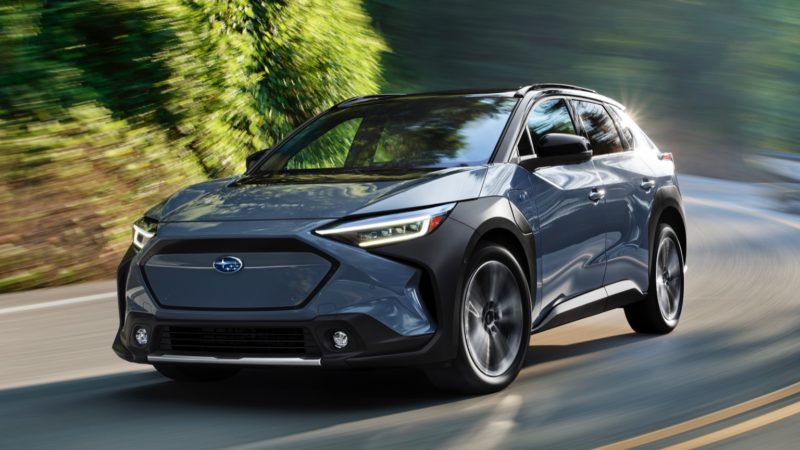
220 miles is the range of a new EV designed for rugged travelers.
In addition to forests, the 2023 Subaru Solterra electric crossover is suitable for rocky ridges, sandy deserts, potholed fire routes, and pretty much anyplace else where there isn’t pavement.
It is the Toyota bZ4X clone. Actually, the two businesses worked together to design the compact crossovers.
But Subaru is sticking to its usual consumer profile: young outdoor adventurers, while Toyota is targeting the urban commuter population with its mass-market electric vehicle.
The Toyota bZ4X and the Solterra have similar sheet metal, interior styling, electric drivetrain, and electric all-wheel-drive system, but the Solterra is a distinct car.
Subaru was the partner in charge of the design and engineering of the chassis, suspension, and AWD. They also tuned the suspension of the Solterra to be stiffer and more off-road capable.
Toyota vs. Subaru: Differences in Design
Nearly every exterior and interior detail of the two cars is the same, yet we believe the Solterra has a little nicer appearance. The color of the Solterra that we observed was less reflecting than the glossier Toyota hues. The character lines and wrinkles of the Solterra appeared softer, however this could just be an optical effect.
The two look nearly the same from the side and back. The Subaru has unique LED headlamp design up front. Rather than using the thin, linear lights found on the Toyota, it uses a narrow “C” form on each corner. There are also conventional fog lights on the Solterra.
The roofline extends backward with a moderate incline, and the long wheelbase forces the wheels out to the corners for a broad, dynamic stance. There are two short extensions that protrude from the upper edge of the rear liftgate in place of a full-width wind spoiler. It appears as though the middle 75% of a conventional liftgate spoiler has been removed.
The same thick black cladding that covers the Subaru Crosstrek is used to the wheel wells. However, the front cladding of the bZ4X and Solterra encircles the headlights. It forms pretty attractive faux air intakes as it descends the front fascia on either side.
Subaru also places its emblem in the middle of an area encircled by black trim on the nose of the Solterra to draw attention to it. In contrast, the Toyota’s snout is really simple.
Large infotainment touchscreen and a sizable driver information screen, located high in the dash in front of the steering wheel, are integrated within the long, fabric-covered dash. The central console is nearly level.
Blind-spot monitoring, lane-keeping assistance, adaptive cruise control with full stop-and-go capability, rear cross-traffic alert, pre-collision warning, and crash mitigation with automated emergency braking and throttle control are all included in Subaru’s excellent standard EyeSight advanced safety and driver-assistance system. Subaru’s first model featuring a 360-degree surround-view camera system is the Solterra, which comes in quite handy for off-roading and parking.
Wireless charging and connectivity with Android Auto and Apple CarPlay are standard features of the infotainment system.
Professional Off-Roader
All-wheel drive is standard on the Solterra, with one motor driving the front wheels and a separate rear motor spinning the back wheels. Electronic signals determine the optimal torque distribution for every motor.
The dual motor configuration, which produces 215 horsepower and 248 pound-feet of torque, will be the same in all versions. The Solterra has enough power to push over mud holes, over logs, and up steep hills on slick gravel trails, but it won’t win any drag races.
There aren’t many EVs that can handle rough terrain well. The Toyota bZ4X, which shares the same engine as the Solterra, and the AWD Volkswagen ID.4 with 201 horsepower are potential rivals to the Solterra.
The StarDrive power control system and the X-Mode automated off-road traction controller from Subaru, which help maintain steady, smooth speeds when slogging through the backcountry, are standard equipment on all Solterras.
While Subaru offers 8.7 inches of ground clearance on the Crosstrek, Forester, and Outback, the Solterra only offers 8.3 inches, which is less. However, the cars in question are not towing a bulky battery pack between their axles and beneath their floorboards.
When parked on level, stable ground, Subaru claims that the Solterra’s roof rack can support up to 600 pounds. That will hold up a rooftop tent and two sleeping people.
Range of 220 Miles
Subaru claims that the 71.4 kilowatt-hour “long-range” lithium-ion battery pack used in the 2023 Solterra will allow for a maximum driving distance of 220 miles. Although it’s a large range for a route, it could be constrained if you also have to drive from your house to the trailhead.
The Solterra has the ability to fast-charge DC and can draw up to 130 kW of energy per hour from its two sizes of battery packs. It recharges quickly enough to replace roughly 80% of the energy in a 2023 Solterra battery pack in 45 minutes.
(DC fast-charging is normally limited to an 80% replenishment because it heats up batteries and, for safety concerns, slows down significantly after a certain point. The final 20% will cause the charging time to more than quadruple.)
Most DC fast chargers are situated close to shopping centers and rest areas. Thus, a Solterra should be able to cover about 350 miles in a day with its passengers taking a 60-minute bathroom and lunch break. If a dinner break is factored into the itinerary, the vehicle should go an additional 150 miles.
The trim-dependent range of the all-wheel-drive VW ID.4 is 240 to 249 miles, whereas the Solterra’s is somewhat less. It matches that of the Toyota bZ4X.
The majority of AWD Mach-Es with the 75.7-kWh standard range battery deliver just 210 miles (10 miles less than the Solterra) and have only 5.7 inches of ground clearance, which may turn off consumers who think the Ford Mustang Mach-E is a rival. Approximately 270 miles, or 23% longer range, may be obtained from a battery pack with 33% more capacity in an AWD Mach-E equipped with the 98.8-kWh long-range battery.
Subaru estimates that the two motors in the Solterra—one in the front and one at the back—combine to produce 215 horsepower and 248 lb-ft of torque. That surpasses the 201 horsepower and 229 lb-ft of the single motor of the rear-wheel drive ID.4. However, it falls short of the base 317 lb-ft and 266 horsepower Mustang Mach-E engine.
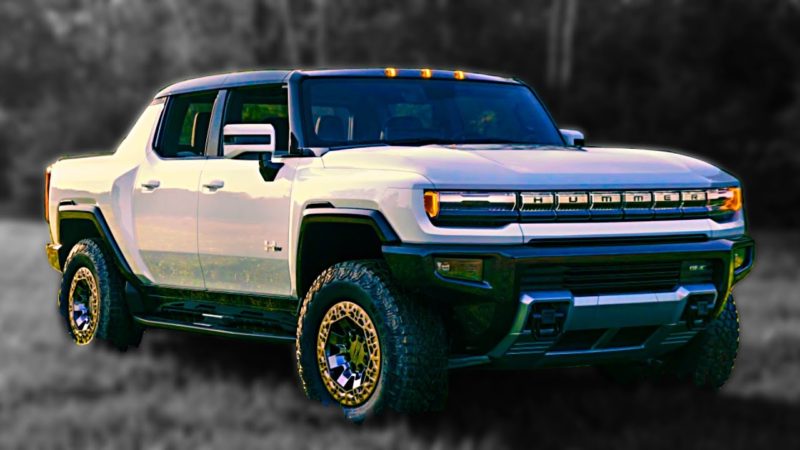
in the driver’s seat of GMC’s fully electric supertruck.
The GMC Hummer EV is an excellent vehicle. It is also the personification of showy consumption.
It is large, striking, well-built, loaded with features (more technology than the majority of its owners will ever need), and pricey—but not excessive given the power it offers.
Driving on the highway is an absolute delight. Off-road, it’s even more amazing, but hard-core aficionados who prefer constructing their own rigs might find it a little too gentrified. Not to mention that it weighs over 9,000 pounds and is 18 feet long by 7 feet 3 inches wide, it will be too enormous and cumbersome for some.
In addition, it consumes kilowatts at a rate that would make the original Hummer H1 with its 10-mpg proud. Although it is still more efficient than any internal combustion truck on the road, it is the least efficient EV overall.
With a range of 329 miles based on GMC estimates and 212 kWh of usable battery capacity, the Hummer EV consumes 64.5 kWh every 100 miles. That’s about 90% more than the average EV’s 34.6 kWh per 100 miles, and more than half times that of the previous inefficiency champion, the Audi e-tron GT performance sedan.
It might also be guilty of having too much information.
Numerous dials, widgets, and icons can be found on its 13.4-inch central touchscreen, which allows users to check or adjust multiple drive modes and ride heights, navigate maps, view 18 camera views—some of which are from underbody cameras with their own lens washers—wheel-lock engagement in both front and rear, pitch and roll angles, compass headings, suspension travel, tire pressures, torque allotment, energy consumption, and a plethora of other features.
Later this year, the five-seat, four-door Hummer EV will make its premiere in Edition 1 trim, costing $110,295 in total. Three (slightly) less costly versions will be released until 2024, when the $81,590 base trim will be available.
Hauling and Towing
GMC would have you believe that there is no true competition for the heavyweight Hummer EV. Even while some electric pickups are lighter and smaller than this one, some—like the Rivian R1T—can outhaul and outtow it, and they’re also fairly good off-roaders. On steep ascents, the Hummer can climb over boulders and other barriers that most competitors shouldn’t attempt, giving it mountain goat skills.
The upcoming Ford F-150 Lightning, which weighs just 6,171 pounds, can tow up to 7,700 pounds with its standard-range battery pack and 10,000 pounds with the extended-range pack. These examples demonstrate that size isn’t everything. The Hummer EV can only tow about 7,500 pounds. In contrast, the 7,148-pound Rivian R1T has an 11,000-pound tow rating.
In terms of payload capacity, the Hummer EV lags below the majority of other mentioned electric pickups. Its 1,487-pound rating is insignificant compared to the 2,079-pound capability of the Ford F-150 Lightning. However, payload isn’t an electric pickup’s strongest suit. They need to carry bulky, energy- and space-hungry battery packs in order to have any range at all. The 2,923-pound Hummer EV Edition 1 battery is heavy. It would be analogous to towing a Honda Civic.
Extended Range on Asphalt
However, such batteries have a respectable on-road range.
On asphalt, the Hummer EV Edition 1 can go up to 329 miles between charges. The maximum range of the F-150 Lightning is 320 miles, while the Rivian is 314 miles. According to Chevrolet, at least one Silverado EV model will have sufficient batteries for 400-mile drives.
However, those range estimates apply to empty trucks that are not being towed. According to a recent statement made by Rivian, the R1T pickup’s range would be halved when towing an 11,000-pound trailer. Although we were unable to tow the Hummer, we believe it will experience the same problem.
Off-Roading Battery Drains
Off-roading also doesn’t help.
During a recent 18.6-mile, 2-hour hike on rutted mud and gravel trails that included multiple challenging climbs and descents, the range of our Hummer EV Edition 1 drastically decreased from its stated 1.5 miles per kWh to a mere 0.5 miles per kWh. The truck was empty save for the two people inside, save for a set of spare tires that were put on eighteen-inch alloy wheels.
We did have the air conditioning on, which used some battery power. But on a sunny day in the Arizona desert, air conditioning is a must for an off-road run.
An Edition 1 would travel roughly 100 miles on the trail at the energy consumption rate we calculated; that distance would drop if it were towing the normal off-roader’s load of food, water, camping equipment, and spare components. And that’s presuming it had a fully charged battery when it got to the trailhead and had time to recharge again before returning home.
Time of Charging
Level 2 charging has been installed by a number of businesses close to well-known trailheads. We were shown a transportable hydrogen fuel-cell generator that could be modified for usage in remote locations and was utilized to charge the Hummers for our event. However, off-roading in a Hummer EV is probably best suited for quick day trips until trailhead charging is widely available.
The Hummer’s 800-volt system enables it to quickly add up to 100 miles of energy on road excursions with a 350-kW DC fast charger in only 10 minutes. It has a 7.4 kW portable Level 2 charging wire that may be used at home or at opportunities for charging. A more potent home station can increase the charging speed to 11.5 kW, which will add 16 miles of range per hour.
Along the Path
35-inch all-terrain tires are standard on the Hummer EV, however mud tires are an option. If the standard 10.1 inches (11.9 inches in terrain mode) of ground clearance is insufficient, tires can be upgraded to 37-inchers without requiring any modifications.
The majority of craters, humps, potholes, and washboard surfaces are smoothed out and a wonderfully smooth ride is produced by the combination of independent front and rear suspension and an air suspension system. The Hummer’s Extract mode may elevate the body even more in an emergency, providing 15.9 inches of ground clearance overall.
With three motors—two on the front and two on the rear axle—the Edition 1 trim produces 1,200 pound-feet of torque and 1,000 horsepower, which may be distributed in different ways to the wheels.
With 13 inches of suspension travel, most difficulties can be overcome, and the lack of a sway bar disconnect system by GM may be forgiven. The Hummer EV has five skid plates to completely protect the undercarriage and can ford a creek that is nearly three feet deep. It can climb and cross a wall that is eighteen inches high.
In addition, there is an off-road mode and an intricate, computer-supervised control scheme that combines differential locking, torque vectoring, mechanical braking, and regenerative braking.
With rear-wheel steering that can transition from a mild 0.3:1 ratio on the highway to a rather aggressive 0.6:1 ratio off-road, all trim levels save the base model give the 18-foot Hummer the agility of a Jeep. Compared to a four-door Wrangler, its turning radius is really four feet shorter.
Of course, there is also the renowned CrabWalk mode, which allows the Hummer to drive diagonally away from impediments by gently turning all four wheels in the same direction, provided that the track is broad enough to handle the vehicle’s 7-foot 3-inch width.
Pleasant Cabin
Not much of our scheduled time in the Hummer was spent on routine roadwork. We drove from our base to the trailhead and back in an hour on nice, level highways. No winding country roads, no curbside or mall parking, and no driving in the city.
We can say that it rides exceptionally nicely on the interstate. There is lots of leg, shoulder, hip, and head room in addition to its excellent sound system, silent operation, and really comfy seats. It also had an excellent climate control system, yet it used up to a third of the energy in our Hummer.
Several automobiles include a larger main infotainment panel than the 12.3-inch driver information screen, which may be set up with three different sections for information and graphic displays.
At freeway speeds, it handled like a well-balanced vehicle, and on the few turns and curves in our route, it rode smoothly with minimal body roll.
In its unrestrained Watts to Freedom mode, it will achieve the promised 0-to-60 mph sprint in a heart-stopping 3 seconds.
The 13.4-inch touchscreen that was centrally located had the drawback of not being oriented toward the driver and of being too near to the seats, which occasionally required looking away from the road. There isn’t a spare tire included, and the bed-mounted spare that is an option takes up a lot of cargo room.
Is the Hummer Going to Work?
Think again if you believe there isn’t much of a market for a vehicle this size with such poor carrying and hauling capacities and an insatiable thirst for gasoline.
Although the Hummer EV isn’t meant for everyone, GMC reports that the Edition 1 truck is sold out and that it has more than 66,000 refundable advance orders for different Hummer models (a Hummer SUV is scheduled to launch in 2024). Orders between the SUV and the truck are currently divided evenly, but as 2024 approaches, the manufacturer anticipates a shift in favor of the SUV, with a final 60/40 split.
Three states account for the majority of reservations (33%), which are California, Texas, and Florida. Requests for the truck are overwhelmingly leaning toward the Edition 1 and the Hummer EV 3X, which is expected to arrive late this year or early next year and is priced at $101,590.
The Hummer SUV is probably the main rival of the Hummer EV pickup for the time being.
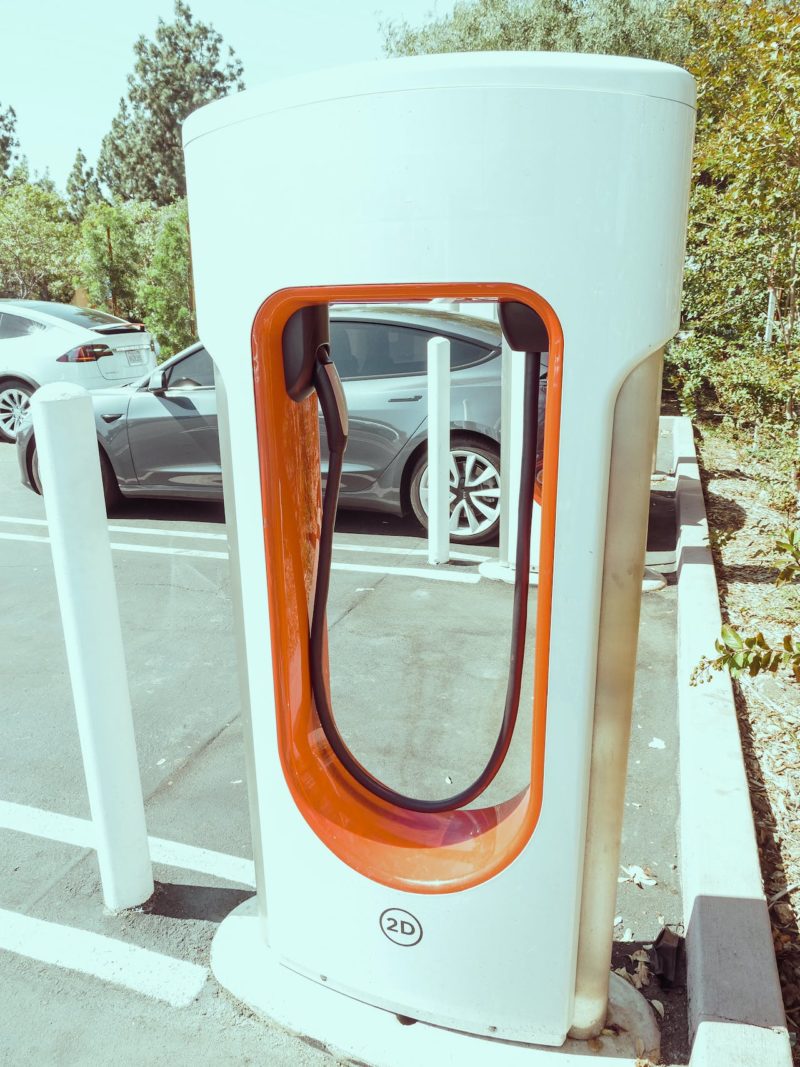
You can plug in for free if you know where to look.
If you possess an electric vehicle (EV) or are thinking about getting one, you might be concerned about how to charge it. Most people (four out of five) recharge their batteries at home because it’s handy and probably the least expensive place to do so. If, however, that isn’t an option for you, you may be able to use your smartphone to charge for free on public equipment. This is how.
Finding Free Public Charging Stations
Indeed, there are other apps available for that purpose. The most well-known is probably PlugShare, which allows you to view any charging station in your area that is both free and requires payment. Moreover, the software uses crowdsourcing to deliver current information about every site, such as whether it’s operational, how much electricity it’s supplying, its exact location inside the lot, and the type of plug(s) it supplies.
Then there are applications for the main networks of charging stations, like EVgo, ChargePoint, and Electrify America. All should provide you with the cost of charging at a certain station.
Users of iPhones may locate nearby charging stations using the Maps app, then narrow down the results to just display those that are free. (Google Maps will offer a wealth of helpful information on charging stations; however, at this time, you are unable to search by price.)
Explained: Public Charging Options
Not every EV can use every station. For example, Tesla has not yet completely allowed non-Tesla drivers to use its extensive network of Superchargers; however, that will change in 2024. Here’s what you should be aware of, though:
There are three different kinds of public charging stations that are available right now: Level 1, Level 2, and Level 3.
The quantity of electricity provided by level 1 charging is about the same as that of a standard 120-volt household socket. Using this technology, modern EVs charge at an extremely slow pace. Actually, a lot of people refer to Level 1 as trickle charging. Actually, it’s only appropriate for topping off an EV over a few days.
The majority of public stations are classified as Level 2, which means that they operate at 240 volts and can charge faster than Level 1. When an EV’s battery life drops to 10%, it will probably take several hours to recharge it at a Level 2 station; nevertheless, just 60 minutes of plugging in can give it a respectable range boost.
Level 3 stations are the fastest way to charge an EV since they supply DC power straight to the battery instead of using the onboard charger, which changes AC electricity to DC. While many EVs (though not all) allow DC fast charging, their battery management systems cap the maximum rate of charge in order to preserve the battery. Under perfect conditions, models that can run at 800 volts, which is currently the maximum voltage for an EV battery, could add roughly 70 miles of range in five minutes on a Level 3 station. Though a normal fast charger seldom operates at its maximum stated charging speed, keep an eye on the time instead of paying too much attention to it.
Level 3 is the best option if you’re going on a road trip because it will get you back on the highway the quickest. However, you should continue using Level 2 for regular use because slower electron transmission is better for the battery. Free Level 3 stations are likewise hard to come by unless your electric vehicle (EV) comes with a manufacturer’s rebate for free charging.
Plug Types: An Explanation
You should also find out what kind of plug your electric vehicle will accept before looking for charging stations.
Most late-model non-Tesla EVs feature a socket that can accommodate both the seven-pin CCS connector, which expands on the J1172 and allows fast charging, and the five-pin J1772 plug, which is intended for Level 1 and 2 charging. In the United States, CHAdeMo plugs are mostly being phased out, while some EVs still have ports for them.
The North American Charging Standard (NACS), which is used by Tesla automobiles, is a different kind of connector that several automakers intend to implement soon so that their consumers may utilize Tesla’s nationwide Level 3 Supercharger network.
The Public Charging Future
As automakers commit to an electric vehicle future, new stations are opening up all the time. To compete with Tesla’s Supercharging network, for example, seven major automakers have declared that they will install some 30,000 Level 3 charging stations across North America. Beyond the restricted incentive schemes they’ll provide to new EV purchasers, we don’t expect those automakers to give away electrons for free. After all, Elon Musk has become a very wealthy guy thanks in part to his provision of electricity to automobile owners, and others want a piece of that action.
While many establishments and towns may still offer some free charging alternatives to entice customers to visit, this may become less common as more people switch from internal combustion to battery power.
Additionally, non-Tesla owners will have to pay more to use Tesla Superchargers than Tesla drivers do, even though Tesla plans to make them accessible to everyone in the near future.
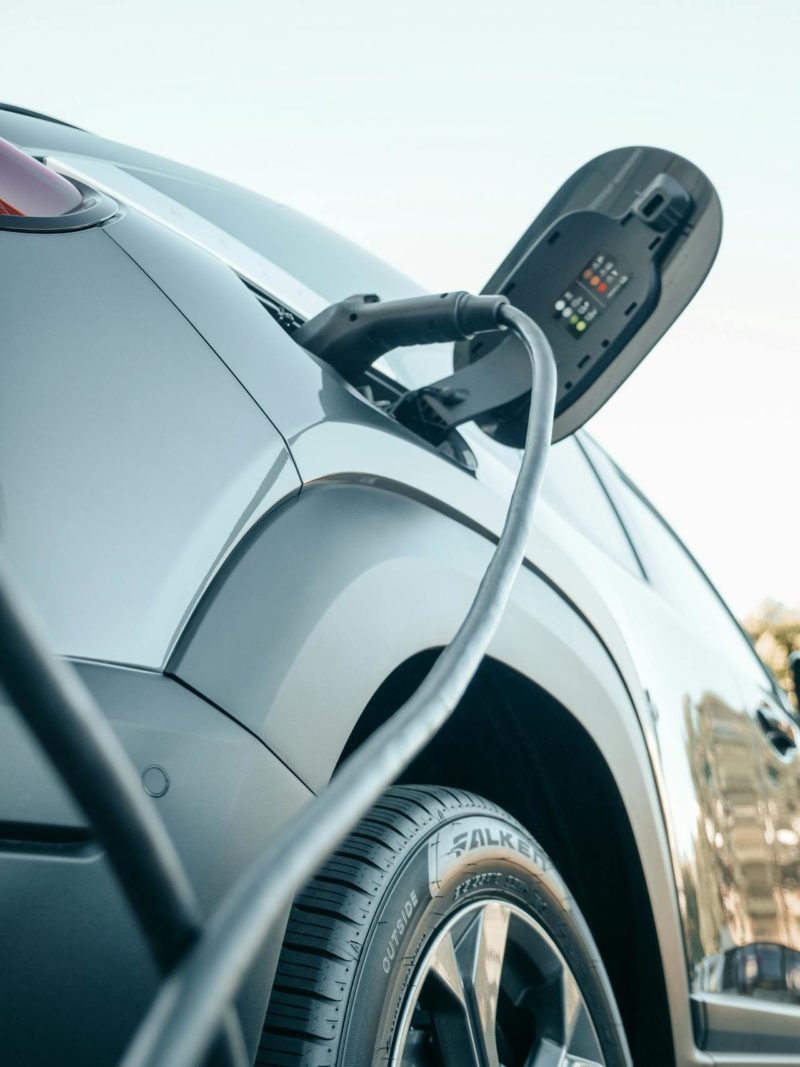
What you need to know about the lifespan of an EV battery and how to prolong it is provided here.
A major issue for anyone considering purchasing an electric car is battery longevity. Even while it’s typical for owners of gas-only cars to change their batteries once or twice, those batteries are little, reasonably priced, and reasonably simple to replace. Rarely is the entire procedure more than a little annoyance. On the other hand, the battery in an electric vehicle (EV) is significantly more costly and larger. It takes a lot longer to replace one, and you cannot do it yourself.
What you need to know about the lifespan of an EV battery and how to prolong it is provided here.
Keys to EV Batteries
The lithium-ion battery pack found in the majority of electric cars is utilized to store the energy needed to run the motors. These are significantly larger lead-acid batteries, usually found beneath the floor in the center of the vehicle, as opposed to the little ones found under the hood of gas-powered cars. Although automakers are always looking for ways to enhance battery performance and are researching new, superior battery options, lithium-ion batteries are now the industry standard.
Lithium-ion batteries are used in EVs for a number of reasons. They balance enhanced driving range and battery size better thanks to their higher energy density. In addition, lithium-ion batteries have a slower rate of discharge, don’t need to be maintained frequently, and provide a more stable voltage as the charge drops.
Although they have certain drawbacks, lithium-ion batteries are perfect for use in electric cars for these reasons. Electric vehicles are more expensive than gas vehicles in part because they are more expensive to produce. Extremely high or low temperatures might have an impact on their performance and shorten their driving range. Another problem is battery life; fully charging and draining a lithium-ion battery shortens its life. How long can you expect these bulky, pricey batteries to endure before needing to be replaced is the key question.
The typical lifespan of batteries in electric cars
The lifespan of an electric vehicle’s battery is influenced by your unique driving habits, much like the fuel efficiency of a gas-powered car changes based on how and where you drive. Examining the manufacturer’s warranty is a useful method of estimating how long an EV battery should survive in a particular car. The federal government has established a minimum guarantee of eight years or up to 100,000 miles for all EV batteries currently on the market; however, several automakers provide longer warranties.
You can be quite sure that your EV battery will last at least that long because auto manufacturers don’t want to foot the bill for repairing EV batteries that die while still under warranty. According to estimations from the US Department of Energy, EV batteries can last between 12 and 15 years under typical driving circumstances. In fact, a battery-electric vehicle’s initial owner may never even need to replace the battery because that’s significantly longer than most car owners maintain their vehicles.
Increased Battery Life
Try the following tips to make your EV battery last longer. First, if at all possible, steer clear of quick charging. In situations where you’re traveling or don’t have time to wait, public rapid chargers are a terrific alternative, although lithium-ion batteries deteriorate more quickly when charged this way. For longer battery life, use your slower home charger.
Secondly, refrain from fully charging or depleting your battery. Even while it’s quite tempting to use it all the way, it’s best to strive for 90%. Many cars may be programmed to cease charging after a specific percentage, which makes this task easier. Additionally, avoid letting the battery on your automobile get too low. If you keep it as close to its maximum capacity as you can, it will last longer.
Replacing a battery is inevitable.
An electric car’s battery will eventually need to be changed, much like the battery in a gas-powered car. The life of a battery can be prolonged, but not indefinitely. An electric vehicle battery should typically last for ten years before needing to be replaced. Therefore, you shouldn’t have to worry about changing the battery very soon if you purchase an EV now.

Large dealer groups have similar difficulties as the automotive industry as a whole: insufficient inventory forces buyers to broaden their search for new cars. When dealership visits are significantly shortened, customers are far less reluctant to travel ninety minutes in search of the ideal vehicle at the best price.
Naturally, a dealer has limited control over a global chip scarcity primarily caused by a pandemic, but there are things dealers may do to improve the digital retail experiences of their clients. The correct digital commerce platform can increase the transactional nature of your website, regardless of whether you’re a local group trying to climb the WardsAuto Megadealer 100 or a group that’s just getting started. In this context, that means making the most of your local presence while allowing customers to complete every stage of the purchasing process in-store, at home, or while on the go.
Large dealer groupings must consequently interpret “digital retailing” as “retailing.” Otherwise, avoid treating DR as a specialized experience that belongs in the internet department. Rather, your dealer group ought to view it as a tactic that simplifies your whole sales procedure. According to a recent study, almost 40% of consumers believe that their pandemic purchasing experience will discourage them from making in-store purchases in the future, proving that digital retail procedures are here to stay.
For your group, what does this signify? It indicates that you probably already have a physical store, a well-known brand, skilled employees, and capital expenditures in inventory; the back-end solutions that greatly enhance the consumer experience when purchasing a car are what’s missing. Even though the forms on your website seem professional, if all they say is that “someone from the dealership will be in contact,” you are falling short of what buyers want from a transactional experience, and they will go elsewhere.
Even though your website may look and feel great, your clients will realize that you are wasting their time if they have to fill out forms that don’t directly relate to financing.
Needs vary throughout various groups. Some want a single marketplace with transactable products across their hundreds of rooftops because they run a sizable regional operation. Some people use Tier 3 websites that include distance-based at-home delivery costs and online deposits for each dealership in their portfolio.
We are aware of this since the SimpSocial platform, which enhances the shopping experience by fostering joy and trust, powers four out of the six biggest public dealer groups in the nation.
If you’re searching for a platform that facilitates an efficient online selling process, works at scale for big organizations, and has the adaptability to accommodate a customized online approach that includes deposits, applications, and distance-based delivery fees, then look no further. Shouldn’t SimpSocial power you as well?

Should you spend money on snow tires?
These seasonal tires are essential whether the weather is snowy or just chilly.
For most Americans, switching out the black rubber bands around your wheels on a seasonal basis makes a lot of sense, regardless of the name you give them: winter tires or snow tires.
Modern tires are made of special rubber that is intended to maintain a tight grip on the road below, whether or not it is covered in ice or snow when temperatures dip below roughly 45 degrees. Tire producers and dealers prefer to refer to these tires as winter tires. Let’s look at some basic advice regarding shopping for winter tires and how to decide if they are worth the investment.
Are Winter Tires Necessary?
You could, but there are a number of variables at work. As a basic guideline, figure out how frequently you might drive when the outdoor temperature drops below that crucial 45 degrees. For certain consumers, this will be apparent. Others should think about the time of day they commute because, in some areas, temperatures rise significantly after sunrise.
That being said, you’re safely in the snow-tire range if you live somewhere where a few inches of overnight snowfall doesn’t cause the school to be closed the following day.
Winter tires are not now needed anywhere in the United States, however they are in certain regions of Canada. There are traction rules on some high-elevation highways in Colorado and Utah that forbid summer-specific tires.
Dedicated Winter Tires: What Are They?
The design of the knobby tire tread and the rubber used in their construction are the two primary ways that winter tires differ from one another.
Typically, the tread features unique grooves called sipes. In addition to helping the tires dig into the snow to prevent the automobile from getting stuck, this unique tread pattern drastically reduces stopping distances when compared to tires that aren’t meant for winter use. Consider the winter tires as a pair of claws holding onto the slick road beneath them.
Rubber compounds for winter are made to stay flexible under freezing weather. This has a significant effect on handling and braking in addition to guaranteeing that the tire maintains a firm grip on the road underneath.
Studs are tiny metal spikes that are placed into the rubber of some tires. In deeper snow, these can offer an additional layer of traction. Though just seven states will allow studdable tires as of 2023 include Colorado, Kentucky, New Hampshire, North Carolina, South Carolina, Vermont, and Wyoming. Before installing studded tires, it is advisable to confirm with local authorities as legislation pertaining to vehicles are subject to change.
Winter Tires: A Financial Consideration
Although purchasing winter tires can be costly up front, keep in mind that you’ll only be using them for roughly half the year. This implies that you will likely have a long time to use them—as well as the tires you fit for warmer weather. Just keep in mind that tire manufacturers usually advise replacing tires when they reach the age of six to ten.
It can be more affordable to get a second set of wheels for your winter tires if you want to retain your automobile for a long time. While precise replacement wheels, similar to the ones you’ll use in the summer, may cost several hundred dollars apiece, inexpensive wheels can cost as little as $50 per corner. Nonetheless, it can cost more than $200 to have all four tires mounted and balanced by a tire shop twice a year. You’ll need to replace your wheels and tires twice a year, and shops usually charge at least $25 for the set. The cost of that extra set of wheels might be recouped quickly.
In addition, storage might be a challenge for anyone without a private garage. You can keep off-season tires for free in a corner of your garage or basement, or some dealerships and tire businesses in colder climates will store them for you.
All-weather tires: What Are They?
All-weather tires are a relatively new invention that combine a rubber compound that sticks well to cold tarmac with a tread pattern that is conducive to snow. Compared to winter tires, these tires have a less aggressive tread design. On the other hand, the rubber kind that is utilized is made to function equally effectively in 100°F and 0°F temperatures.
In addition to being somewhat noisier on dry roads than all-season tires, these tires lack the deep snow grip of a winter tire. Additionally, only a few number of brands and sizes are produced, which raises the price and means they could not fit in every car.
The Bridgestone Weatherpeak and the Michelin CrossClimate are two of the most well-liked all-weather tire alternatives.
All-weather tires may be something to think about if you’re not sure whether to get winter tires or not.
Do Snow-Related All-Season Tires Function?
All-season tires are standard on most new automobiles. This rather deceptive category serves as a catch-all for tires made to provide passable traction in dry or wet weather above approximately fifty degrees. All-season tires include a marking on the sidewall that reads “Mud + Snow” or “M+S,” which makes them even more perplexing. To find out what kind of tires are currently on your automobile, you might want to stop by a tire store.
The unique tread pattern and rubber compounds intended for deeper snow and colder climates are absent from these tires.
Regarding Four-Wheel Drive (4WD) or All-Wheel Drive (AWD): What Does It Mean?
Consider adding winter tires to your car if you purchased it with all-wheel or four-wheel drive to provide you additional control and protection from becoming stranded in the snow and ice. Although they are sometimes misinterpreted, 4WD and AWD are excellent qualities to have when driving in the winter.
Knowing how these two systems work makes it easier to understand how they differ from one another. There’s a lot of misunderstanding about what each system performs. The fact that the terms are frequently used interchangeably just makes it worse. This is how we distinguish them:
First, be aware that all-wheel drive systems come in two varieties:
Only the front or rear wheels are driven by part-time (on-demand) systems until additional traction is required. Because using just two wheels most of the time saves gasoline, these systems are widely used. To detect when to apply torque to the other two wheels, such as when tires begin to spin on ice, the majority of them rely on sensors. Certain trucks and other part-time systems allow the driver to operate the switch.
A full-time system is the alternative kind of all-wheel drive. These systems concurrently direct torque to the front and rear axles when there is equal grip at all four tires. In full-time systems, there can be significant variations in the front-to-rear torque distribution based on the differential type and available grip. However, there aren’t many situations where they don’t apply torque to all four wheels.
In order for both kinds of all-wheel drive to perform well on gripping pavement and snow and ice, they must be able to rotate all four wheels at various speeds while cornering. Their ability to adapt, together with the extra grip provided by running two tires, is what makes them suitable for winter driving.
The way four-wheel drive works is different. Traditionally, four-wheel-drive systems lock the front and rear axles together to ensure they rotate at the same speed when they are engaged (generally via a lever or button). In order to ensure that all wheels always rotate at the same speed, certain four-wheel-drive systems can additionally lock the left and right wheels together (using locking differentials). Because of this, these systems perform well when driving in sand, rock crawling, or even traveling straight on low-grip surfaces. On surfaced roads, however, where the tires must turn at different rates while cornering, it results in binding. When there is snow or ice present, the grip might be further decreased, and four-wheel drive can hinder a car’s turning ability.
What Do You Need, Then?
You might not require winter tires or all-wheel drive if you only drive in the cold a couple of times a year. However, you should be aware that your chances of losing control are significantly higher than they would be with winter tires, so be ready to drive extremely slowly on slick surfaces. Yes, you require winter tires if you drive frequently in winter conditions and have all-wheel or four-wheel drive. It’s that easy. Better stopping performance is the most significant benefit that winter tires offer, something that all-wheel and four-wheel drive cannot match. Additionally, improved turning performance occurs frequently.

Use these easy strategies to get the most out of your electric car this winter.
Wintertime driving of an electric vehicle frequently calls for some planning because the low temperatures can significantly reduce the passage of lithium ions through the anode and electrolyte in the battery. Range is impacted since the pack is unable to store as much energy or generate as much power as it usually can. In fact, as the snow starts to fall, EV drivers could logically expect a 25% to 50% decrease in range. However, you can survive the winter in an electric car provided you are knowledgeable about battery best practices. Don’t stress out or give up on EVs. These hints ought to be useful.
1. When at all possible, park in a garage.
A garage offers some insulation from the cold, not to mention snow and ice, even if it isn’t insulated. That’s critical as winter battery efficiency benefits from warmth to every degree. Additionally, parking inside a building will save you energy by preventing the need to operate a defroster to remove ice buildup on your windshield. The next time you travel downtown and have the choice of parking in an enclosure or on the street, keep this in mind.
2. Plan your trip out.
The car will preheat the cabin and batteries while still plugged in if you just tell it when you want to depart, whether it be in 20 minutes or at a consistent time every weekday. This way, you won’t waste battery power on unnecessary tasks. You can accomplish this via the specialized app or infotainment system.
3. Before fast-charging, prepare the battery.
Usually, planning your departure will help the battery get ready for the drive. Giving the car advance notice is advised if you want to stop for a quick charge while driving; otherwise, you risk plugging into a fast-charging station and receiving a sluggish charge.
This is due to the fact that the battery management system will typically reduce the charge rate to avoid damage if the pack does not have enough time to warm up. Preconditioning, or preheating, the battery on the way to the plug will help you avoid this. Usually, all you need to do to prepare a Tesla is to select a Supercharger station as your destination, and the vehicle will take care of the rest. Other EVs include battery cooling, which takes energy and may reduce range if the driver doesn’t want it.
4. Bake for a little longer to recharge.
As previously indicated, the chemical process that revitalizes a dead or failing battery is slowed down by cold temperatures. A cold EV can need a few more hours on a Level 2 station to achieve its maximum range.
5. Check the pressure in your tires and, if possible, replace them with winter tires.
Many tires are underinflated because cold weather causes air to compress. That’s not ideal for winter driving because an underinflated tire can become more of a plow by sagging slightly and expanding the contact surface, which increases rolling resistance and hurting range. Thus, as the temperature drops, check their pressures and supply air as necessary.
Additionally, winter tires are well worth the expense if you can afford them. They probably won’t improve your range or cabin noise, but in icy circumstances, they’ll stay flexible and grippy, preventing your heavy EV from becoming a tractionless projectile.
6. Drive slowly and in the Eco or Chill mode.
As long as the weather permits, select your vehicle’s most economical and gentle drive mode if range is a concern. To add a few more miles to the range counter, it might lessen the acceleration response, lower horsepower, and/or switch from four to two drive wheels, but it’s still better than getting stuck on the side of the road.
Don’t waste this edge by driving quickly or hammering the pedals. Better still, stay off the highway if you can. If not, think about going 65 mph rather than 70, but be considerate and stay in the right lane when going slower than the posted speed limit.
7. Avoid turning up the heat.
Since warming a person’s body is far more effective than warming the air around them, heated seats are a common feature of electric vehicles. To beat the cold, use them (and a heated steering wheel, if applicable) rather than the air conditioning system.
8. Give up using only one pedal.
Given that the goal of one-pedal driving is to maximize range, this may seem paradoxical, but it does this by causing significant regenerative braking. Usually, this causes a sharp deceleration. You’re inviting catastrophe when you throw in an ice road.
9. Unless the roads are dry and clear, avoid using the cruise control.
The car won’t always do so softly if it has to brake or accelerate in order to keep a predetermined speed. When the tires are gripping well, this isn’t too much of a deal, but on an icy or wet road, a strong steering movement could cause your car to skid. And speaking of which, it may also be advantageous to pursue a longer distance throughout the winter.
10. Maintain a battery charge of more than 20%.
That’s a good general rule of thumb all year round, but it’s especially crucial in cold weather, when range decreases quickly and the battery needs to save some power to stay warm.
11. Take out anything weighty that is unnecessary from the car.
Sand bags, bowling balls, anvils, and such items. The EV can travel farther the less weight it must carry.
12. Store some winter gloves inside the glove box.
Just like Dorothy Levitt meant, to help you stay toasty without the cabin heater! It wouldn’t hurt to include a thermal blanket and some knit hats.
SimpSocial’s Driving and Ownership Advice
In search of further beneficial advice and pointers around being an automobile owner? You only need to look at our blog’s section on car ownership. For the newest advice on purchasing and owning, make sure you’re following us on Facebook, Instagram, and TikTok.

The verdict: The electrified 7 Series sedan from BMW is large, quiet, smooth, and fashionable. It combines conventional luxury with cutting-edge technology, with largely excellent results.
Comparing the competitors, the i7 is probably more accessible than the Lucid Air, significantly more comfortable in every seat than the Mercedes-EQ EQS, and more elegant and opulent than the Tesla Model S.
Regarding the design of electric vehicles, there are two schools of thinking, according to my theory, which has recently been frequently validated. The first is, “Let’s build a typical car and just swap out the gasoline engine for an electric one that runs on batteries.” Genesis, a premium South Korean automaker, has taken this route with its electrified G80 sedan and electrified GV70 SUV. One approach is to create a spacecraft, a concept Mercedes-Benz has implemented with its EQ range of automobiles. Both the EQS and EQE have outrageous designs, are packed with bizarre, mysterious technology, and practically require a week of astronaut training to operate. However, a few manufacturers have started to err on the side of both techniques. Two of them are BMW and Lucid, whose Air sedan functions like a typical luxury vehicle but looks like a spaceship.
I drove the battery-electric i7 version of the revamped BMW 7 Series full-size luxury car, although it is also available with conventional internal combustion engine power. The two vehicles are almost identical, but for their respective powertrains; this includes the appearance, interior furnishings, passenger space, and controls. This presents BMW customers with an intriguing option: Choose between the electrification of the i7 and its similarly wild new styling, or go with a traditional powertrain with the 7 Series’ wild new appearance.
Related: BMW Reveals 2024 i7 M70 xDrive, Its Most Potent EV To Date
I’m left wondering why anyone would bother with a gas version of the BMW i7 after a week of driving it with its electric drivetrain. Electrons are superior to hydrocarbons for the most opulent driving experience. I’ll explain why.
The i7 Is Silver, Silence Is Golden.
The engine is the only significant distinction between the electric i7 and the gas-powered 7 Series. Three electric powertrain options are available to BMW i7 purchasers in lieu of the German gasoline-to-noise converter. Arriving as a 2024 model, the i7 eDrive50 is a rear-wheel drive vehicle with a single electric motor producing 449 horsepower and 549 pounds-feet of torque, which is transferred to the road via a single-speed transmission. According to the manufacturer, it can reach 60 mph in 5.3 seconds. The next step up is the all-wheel-drive i7 xDrive60, which BMW claims can go from 0 to 60 miles per hour in 4.5 seconds. It is equipped with two electric motors and a system output of 536 horsepower and 549 pounds-feet of torque. The 2024 i7 M70, which can reach 650 horsepower and 749 pounds-feet of torque in just 3.5 seconds, is the ultimate option if you want to go all out. I drove a silver AWD xDrive60 as my test car.
Based on EPA calculations, the i7 xDrive60’s 101.7 kilowatt-hour (usable) lithium-ion battery pack can propel the car up to 300 miles. It can receive up to 195 kilowatts of DC fast charging (therefore avoid using a 350 kW charger at an Electrify America station unless you want to attract unfavorable stares from fellow EV owners). It is quite good that it can be charged at home at up to 11 kW on a 240-volt Level 2 setup with the right circuit.
The i7’s battery pack is notable since it is just 4.3 inches thick, which means that placing it low in the chassis of the 7 Series doesn’t significantly affect interior space, unlike other cars like the Genesis G80, whose battery costs it some headroom. Due to its low center of gravity and proper weight distribution, the i7 feels incredibly heavy—which is understandable given its nearly three-ton weight—but it also handles very well and manoeuvres through turns with reasonable dexterity.
The i7 excels at acceleration, which is a key component of EVs. This is a huge car, so it’s amazing when it accelerates silently from 0 to 60 miles per hour (that’s the BMW time, but after driving it, I have no reason to question it). The more high-end electric vehicles I drive, the more I believe that this is the ideal powerplant for anything pricey and opulent: It makes no strange noises or vibrations, and it is smooth, silent, and able to supply electricity on demand. You can adjust the settings to have it generate noise, but I usually find artificial, piped-in sounds to be bothersome. I would much rather have a peaceful experience because it would add to the sense of pampered, secluded luxury that you are spending a lot of money on.
Even while the i7 has great body control, changing directions reveals just how heavy the car is—that battery pack is not little. The i7 wants to be a touring car, speeding between destinations on highways instead of being thrown around on a two-lane blacktop, as demonstrated by flogging this vehicle over winding roads. It understeers predictably, although you’ll definitely want to drive it more slowly than, example, a BMW M5, considering the car’s weight.
An Other Kind of Opulence
With no motor noise to cover up squeaks, rattles, road noise, wind roar, etc., the rest of the car needs to be even better than before to match the i7’s luxuriously quiet operation. The i7 has an outstanding build quality and is capable of handling the workload. Although I wasn’t expecting fabric upholstery in my test car instead of leather or vinyl, it’s excellent. The tight, luxurious-feeling weave is a pleasant diversion from the plush, leather-like seats seen in nearly every other car on the market that isn’t a basic subcompact. The inside of the i7 is most appreciated for its seating material; other than that, certain areas feel a little flimsy, such as the dash trim, which in my test car was finished in a dull gray color. Its inside is a bit of a mixed bag in terms of decor; the doors and dash have lighted panels that offer a splash of color, but they’re hidden behind some cheap-feeling translucent plastic.
Not that it really helps with the huge rectangular display on top of the dash. Yes, the left gauges can be reconfigured, and the right touchscreen is bright and vivid, but the practice of placing a large, square-off tablet above the dash lacks flair, especially when it’s being done by everyone. It also means that a lot of the i7’s controls, like the crazily intricate and challenging to understand climate control system, are now accessible through the touchscreen. Even when the device was stationary, I had a lot of trouble getting it to do what I wanted it to half the time. Trying to adjust the climate while driving is a major distracting exercise. It took a minute to even figure out how to operate each individual vent because they are touch-sensitive and not very intuitive. BMW is beginning to reach the stage where its goods become difficult to use despite their advanced technological features. As Lucid has amply shown, things don’t have to be this way, but BMW still conflates “luxurious” with “technology-packed.”
My main complaints about the i7’s interior are related to its controls and some materials. In contrast to its primary rival, the EQS, there is an abundance of space in both the front and rear seats. The i7 is an excellent executive vehicle because to its spacious rear, which offers ample head and legroom. The unique packaging of the EQS has neither in large quantities. Although the EQS is completely different from the Mercedes-Benz S-Class, an attempt was made by Mercedes to keep the two cars distinct, the i7 is enough similar to the conventionally powered 7 Series sedan for the advantages of that traditional layout to transfer to the electric model. To be honest, the BMW approach appears to be more successful for customers; the i7 has a lot less of a spacecraft vibe, which lowers the entrance hurdle for buyers who don’t want to undergo astronaut training in order to drive an EV.
Technical Astronomy, Cost Astronomy
My test car started at an eye-watering $120,295 and included a $995 destination fee, which is surprisingly fair these days. If German luxury car manufacturers are known for anything, it’s making everything optional so they can charge you more for it. With $31,700 in options for a grand as-tested price of $151,995, this i7 xDrive60 was no exception. Among these choices was the Executive Package, which includes electronic technologies like Active Comfort Drive and Active Roll Stabilization as well as automatic-closing doors and “crystal” lighting. Rear Executive Lounge Seating, which includes a footrest and a reclining rear seat, was also provided. A huge 31-inch screen that folds down from the ceiling completely obscures the driver’s view out the back window. Even though this car is expensive, my test vehicle actually represents mid-range i7 pricing; if you don’t want to play around with the options, you can have a rear-wheel-drive i7 eDrive50 for $106,695, or you can max it up and get a fully loaded, two-tone-painted i7 M70 sedan for more than $207,000.
To be honest, these costs are comparable to those of other luxury EVs that are currently being offered by almost everyone. An Air or EQS will easily set you back six figures, and a Tesla Model S can also be optioned up to that level (although with considerably fewer luxury features). Wealthy consumers looking for a flagship full-size luxury sedan now have an easy option between BMW’s next-generation electric vehicle and conventional gas power.
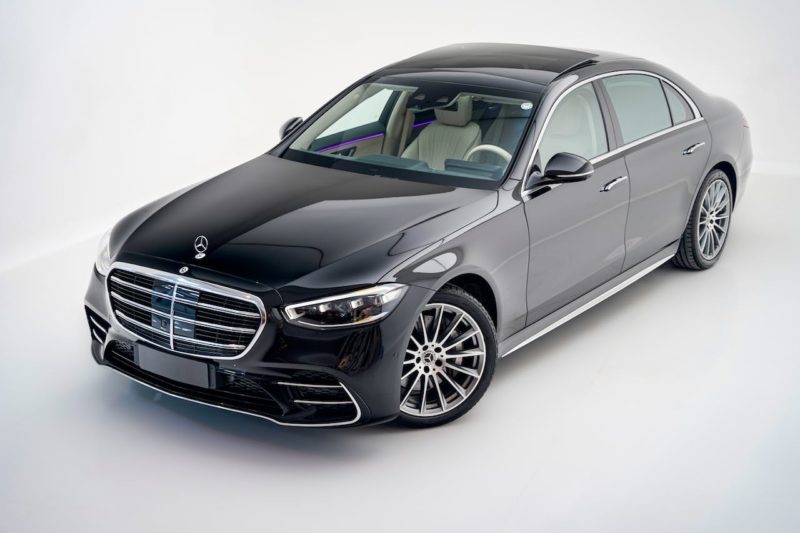
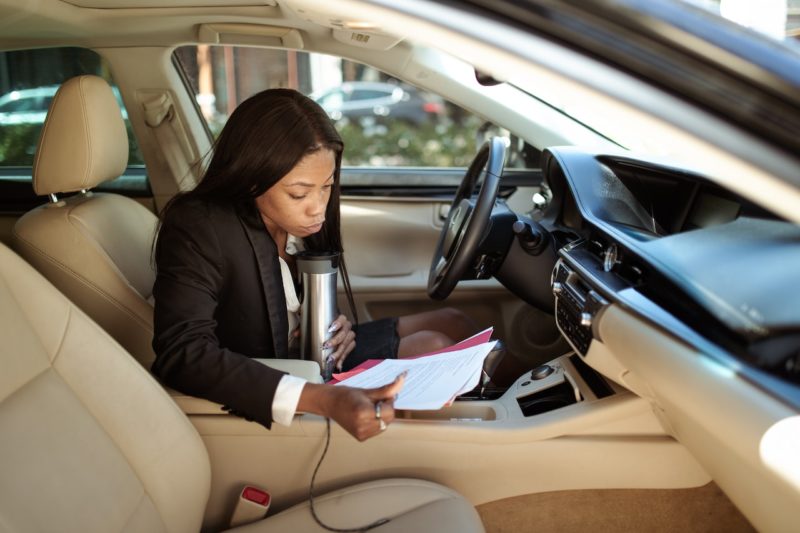
Are you planning to purchase your first vehicle, or are you considering selling your current one? A car title is probably going to be necessary when you’re in the middle of either process. From the time you purchase a car until the day you sell it, this document is essential to everything involving cars.
Let’s dissect automobile titles, including their definition, types, acquisition process, and transferability.
What is an automobile title, in essence?
Consider a car title, also known as a Certificate of Title, to be the birth certificate for your car. It formally identifies you or your company as the proud legal owner of the car and is issued by the state’s Department of Motor Vehicles (DMV). Every time you make a significant modification to your car, such as moving from one state to another and needing to replace your license plates, you will require this crucial paperwork.
INFO CONTAINED IN A CAR TITLE?
An automobile title is more than simply a pretty document. It includes important details about your car, such as the license plate number, the year, make, and model of the vehicle, the Vehicle Identification Number (VIN), and your name and address as the registered owner. A lienholder’s (the vehicle’s loan holder) information may also be included in some titles.
Car Title Types (Title Brands) and Their Functions
This is the fascinating part. Every car title has a different narrative. They come in a variety of forms, each telling a unique story about the history of the vehicle:
The ideal kind of vehicle title is one that is clean. It demonstrates that the car has never been in a serious collision, has never needed any repairs or damages, and isn’t regarded as a junk car or a lemon.
Cars that have been in significant collisions or natural disasters and are judged a total loss by your auto insurance provider are issued salvage titles. Even though they can be sold, these cars are frequently used as spare parts.
Title Rebuild/Reconstructed: A salvage car may be granted a rebuilt or reconstructed title if it is restored to a roadworthy state. After undergoing substantial repairs, these cars passed state inspections.
Similar to a salvage title, a junk title is typically applied to automobiles that are worthless as parts and cannot be driven safely again.
In the event that there is a dispute regarding ownership or if the vehicle’s ownership history is unknown, a bonded title may be granted. A surety bond ensures the security of a bonded title.
Lemon Title: In certain jurisdictions, a new car may be labeled as a “lemon” and have its title changed if it has serious problems that aren’t resolved during the warranty period despite multiple attempts to remedy them.
Flood Title: A flood title, which denotes water damage, is frequently given to vehicles that have experienced floods.
Hail Damage Title: This title is given by several states to cars that have been hit by hail.
The type of title an automobile has is crucial to know since it can have a big impact on the safety and value of the vehicle. Don’t forget this while purchasing a used vehicle. As soon as
Obtaining, Updating, Transferring, or Replacing a Vehicle Title
When you buy a car at a dealership, you typically receive your car title (but if you buy a car online, it can also be provided to you via mail). If you sell the car, move to a different state, or change your name, you’ll need to update your title at the DMV. You lost your title. Not to worry. The DMV in your state is where you can apply for a duplicate title (more on this later).
Changing a car’s title
When ownership of the vehicle is transferred, transferring the title is a ceremonial act. Whether you’re selling your automobile or giving it to a relative, the procedure usually entails filling out a title transfer form, paying the required amount, and sending the documentation to your neighborhood DMV.
KEYING UP YOUR AUTOMOTIVE:
It’s crucial to keep in mind that keeping your vehicle title in the glove box is not a secure idea. There’s never a solid reason to stow it. Better storage would be a safety deposit box or fireproof safe.
TITLE OF LOST CAR: ARE THERE ANY OPTIONS?
Things can go missing, even for the most organized people. You don’t need to panic if you find yourself in this predicament. You can obtain a duplicate title with the assistance of your local DMV.
You will be required to supply certain data, which may include the VIN, identification documentation, and a nominal charge. The Department of Motor Vehicles (DMV) in your state will often want the following paperwork if your vehicle has been stolen or if you have misplaced the title:
Application for a Duplicate Title: State-specific requirements vary, but in general, this form needs comprehensive details on the car and its owner.
A driver’s license, state ID, passport, or other type of official identification could serve as proof of identity.
Vehicle Identification Number (VIN): Usually located inside the driver’s side door or on the dashboard on the driver’s side.
Odometer Disclosure Statement: This document, which lists the vehicle’s mileage at the time of application, may be required in some states.
Lien Release: Certain states demand verification in the form of a lien release if there was a lien on the car and it has been paid off.
The cost of replacement charge: Replacing a title usually has a charge. States have differing amounts.
Note that these are only recommendations; specific needs may differ based on your location.
Is a Car Sale Possible Without a Title?
Just like selling a house without a deed, selling an automobile without a title might be difficult. Ultimately, the title serves as evidence of your legitimate ownership. On the other hand, it might not be impossible, given the specific circumstances and local rules. Always seek the advice of a legal expert or your local DMV before attempting to navigate these waters.
Providing Your Child With Your Car
You may decide to give your child an existing car when the time comes to hand them the keys. This procedure entails giving the title to your child and calling for a visit to the DMV, a bill of sale or gift affidavit, and a completed title transfer form.
IS IT POSSIBLE FOR ME TO GIVE MY CHILD A CAR WITHOUT CHANGING THE TITLE?
Giving a car to someone without transferring the title is not against the law, but there are a lot of possible issues. Should the title remain untransferred, you may be accountable for any further claims.
Be aware that state rules may differ from those in this page, which offers a broad overview of auto titles. For guidance specific to your circumstances, always seek the opinion of a legal expert or your local DMV.
We hope this thorough explanation of auto titles has been useful. You’re now prepared to handle the challenges of car ownership, whether it is purchasing, selling, or giving a car as a present. Enjoy your drive!
Other Frequently Requested Information
DISTINGUISHING A CAR TITLE FROM A REGISTRATION FROM AN INSURANCE PROOF?
A legal document that certifies ownership of a car is the title. However, registration entails listing your car with the state so that it can be legally driven on public roads. Finally, documentation proving you have the required insurance coverage for your vehicle is known as proof of insurance.
CAN I OBTAIN AN ONLINE COPY OF MY CAR TITLE?
Depending on your state, this service may or may not be available. It is possible to apply online for a duplicate title in some states. For correct information, check the website or speak with your local DMV.
CAN A CAR BE SOLD WITHOUT A TITLE?
It is normally difficult to sell an automobile without a title because the title is evidence of ownership. However, based on the laws of your state, there might be an exemption. To learn about your alternatives, speak with a lawyer or your local DMV.
WHAT STATES ARE ENTITLED?
Title-holding states are those in which the title is held by the lender until the loan balance is settled in full. Kentucky, Minnesota, New York, Maryland, Missouri, Oklahoma, Michigan, Montana, and Wyoming are among the states that possess titles.

Your driving history is a reflection of your behavior behind the wheel, so it’s important to know what it says about you for a number of reasons, including how much your auto insurance will cost. We’ll discuss what a driving record is in this blog post, how to find out if you have a spotless record, and how to correct any infractions on your record.
Comprehending Your Driving History
Your official driving history is documented on your driving record. It includes details on moving infractions, collisions, revoked licenses, and other relevant occurrences. The Department of Motor Vehicles (DMV) in your state is responsible for maintaining your driving record, which is available to insurance providers, police enforcement, and other approved organizations. If your driving record is spotless, it indicates that you have no infractions or accidents on it.
THE AFFECT OF SPEED ON YOUR RECORD AS A DRIVING PERSON
One of the most frequent moving offenses that can harm your driving record is speeding. A 2020 survey by The Zebra found that 87% of American drivers acknowledge speeding at least a few times annually.
Even though speeding is a common driving offense in the nation, it’s crucial to realize that getting caught speeding more than once can result in points on your license, higher insurance costs, and, in certain cases, even license suspension.
Ways to Examine Your Driving History
You have multiple options for requesting a copy of your driving record: online, via mail, or in person. We’ve outlined how to verify your driving record below.
APPLY ONLINE FOR YOUR DRIVING RECORD
Through their official DMV website, the majority of states have the convenient option to request your driving record online. You will need to enter personal information, like your date of birth and driver’s license number, in order to request your record online. A copy of your driving record is often available for a cost, which is subject to change by state.
APPLYING IN PERSON OR BY MAIL FOR YOUR DRIVING RECORD
If you would rather request your driving record via mail, all you have to do is fill out the required paperwork and send it to the address that your state’s DMV has provided. As an alternative, you can pick up your record in person by going to your neighborhood DMV office. Just like with the internet approach, there’s usually a cost, and you’ll need to present identification.
Advice for Preserving a Spotless Driving Record
Numerous benefits come with having a spotless record, such as reduced insurance costs and increased job prospects. The following advice can assist you in keeping a spotless driving record:
Respect Traffic Laws: The cornerstone of safe driving is respecting traffic laws. Respecting posted speed limits, traffic signals, and road signs is part of this. Refusing to commit moving infractions like speeding, running red lights, or careless driving will help keep your driving record clean.
Practice Defensive Driving: To prevent accidents, defensive driving entails foreseeing possible risks and making prudent decisions. Reducing the likelihood of accidents and having a spotless driving record can be achieved by staying vigilant, keeping a safe distance, and being aware of your surroundings.
Steer clear of distracted driving; it may have a major negative impact on your driving record and is one of the main causes of accidents. Steer clear of eating, using electronics, and doing anything else that diverts your focus from the road.
Take a Driving Safety Course: To brush up on your driving knowledge and abilities, think about signing up for a driving safety course. Certain states provide discounts on insurance premiums or license point reductions as rewards for finishing these kinds of courses.
Things to Check Upon Your Driving History
Make sure to check for any moving infractions, accidents, license suspensions, or other unfavorable marks on your driving record when you review it. These things may signal that you are a high-risk driver and have an effect on your insurance prices.
Try contacting your state’s DMV to get any inaccuracies or possible mistakes removed from your driving record. Driving-related errors on your record may result in higher auto insurance premiums and possibly make it difficult for you to get employment.
Fixing Inaccuracies in Your Driving History
Errors on your driving record should be corrected as soon as possible because they might have a negative impact.
If you discover mistakes in your driving history:
Obtain Supporting Documentation: To bolster your argument that there was a mistake on your driving record, gather any pertinent documentation, including court records, police reports, and evidence that you paid fines.
Speak with the DMV: Get information about the procedure for contesting mistakes on your driving record by contacting the DMV in your state. As directed, fill out the required papers and send them in with your supporting documents.
After filing your disagreement, get in touch with the DMV again to find out how your case is progressing. Verify that your updated driving record appropriately reflects any revisions.
“What is a Motor Vehicle Record (MVR) and How Does My Auto Insurance Affect It?”
Your driving record is also referred to as your motor vehicle record, or MVR. Your MVR, like the driving record we talked about previously, is a comprehensive record of your driving history that includes tickets, collisions, license suspensions, and any other events that happen while you’re driving. Your MVR may be accessed by law enforcement, insurance companies, and employers to evaluate your driving habits.
THE RELATIONSHIP BETWEEN YOUR AUTO INSURANCE AND MVR
Your auto insurance prices are largely influenced by your motor vehicle record (MVR). Insurance companies evaluate your driving risk based on the data in your MVR.
Lower insurance rates may be the consequence of demonstrating to insurers that you are a low-risk driver with a spotless driving record free of tickets and collisions. In contrast, you can be labeled as a high-risk driver by insurance providers if your driving record is full of repeated moving infractions or accidents. Because drivers who pose a higher risk are more likely to make claims, insurance companies may raise prices to offset the increased risk.
You can profit from cheaper insurance rates and more roadside peace of mind by being proactive in keeping a spotless MVR.
THE FOLLOWING IS A LIST OF SOME OF THE WEBSITES YOU CAN USE TO CHECK YOUR MVR:
Arizona – https://azdot.gov/motor-
California – https://www.dmv.ca.gov/portal/
Maryland – https://mymva.maryland.gov/
New Mexico – https://secure.mvd.newmexico.
New Jersey – https://mymvc.state.nj.us/
Virginia – https://www.dmv.virginia.gov/
Illinois – https://www.ilsos.gov/
Washington – https://www.dol.wa.gov/
Oklahoma – https://pay.apps.ok.gov/dps/
Ohio – https://bmvonline.dps.ohio.
Nevada – https://dmvapp.nv.gov/dmv/dl/
Mississippi – https://www.ms.gov/dps/
Texas – https://txapps.texas.gov/
Louisiana – https://expresslane.dps.
Arkansas – https://www.ark.org/personal_
Georgia – https://dds.drives.ga.gov/_/#0
Examine Your Driving History Frequently
Your driving history plays a big role in your driving profile and affects a lot of different areas of your life. You can benefit from reduced insurance costs and more driving chances by keeping an eye on your driving record and taking proactive measures to keep it clean. Take aggressive steps to correct any inaccuracies you notice on your driving record so that it truly represents your driving style.
We appreciate you reading our post on how to find out if you have a spotless driving record, and we hope the extra details on MVRs were helpful.
 With an increased emphasis on electric cars (EVs) as a sustainable and environmentally friendly transportation choice, the automotive industry is undergoing a substantial transition. Ford Motor Company, one of the biggest manufacturers in the world, has been making investments in battery technology to power its line-up of electric vehicles. This article examines the vital function batteries play in Ford’s electric vehicles and how they are influencing the direction of the auto industry.
Modernization of the Battery Industry
Every electric car relies on battery technology, and Ford has been at the forefront of adopting the most recent developments in this area. One of the most important advancements, according to The Verge, is the switch from conventional lead-acid batteries to more sophisticated lithium-ion batteries. Lithium-ion batteries are the best option for contemporary electric vehicles since they have a higher energy density, longer driving ranges, and quicker charging
The short driving range of electric vehicles in comparison to those powered by conventional internal combustion engines has been one of their major problems. In order to increase the driving range of its electric vehicles, Ford has been aggressively addressing this issue by installing larger battery packs and improving the battery management system.
Quick-charging capacities
Fast charging capabilities are a crucial component of the battery technology used in Ford’s electric vehicles. The adoption of electric vehicles is significantly influenced by the charging infrastructure and charging times. Ford has concentrated on creating quick-charging options to increase market attractiveness for electric vehicles.
Impact on the environment and sustainability
Battery technology is essential for increasing the sustainability and minimizing the environmental impact of the new Ford EVs. Ford is dedicated to using materials from ethical sources for its batteries, and it is looking into alternatives for recycling and reusing batteries after their useful lives have passed.
Additionally, the overall environmental advantages of electric vehicles are increased by including renewable energy sources into the infrastructure for charging them. Ford is thinking about methods to reduce the environmental impact of battery manufacture and disposal while it continues to invest in battery technology.
Vehicle Power and Performance
The driving range of electric vehicles is mostly determined by battery technology, which also has a big impact on their performance and power. Thanks to developments in battery technology, Ford’s electric vehicles have displayed excellent acceleration and power delivery.
Ford’s electric vehicles offer a thrilling driving experience thanks to their electric drivetrain and high-performance battery packs, which can produce rapid torque and smooth acceleration. Electric vehicles are becoming competitive with their gasoline-powered equivalents in terms of performance and power delivery as battery technology advances.
Future Initiatives and Collaborations
Ford is still dedicated to the advancement of battery and electric car technology. In the upcoming years, the firm will increase its EV offerings, introduce new electric vehicles, and electrify its whole lineup. Ford says that in addition to internal advancements, they are looking into joint ventures with battery and technology businesses to quicken the speed of innovation in battery technology. Ford can continue to lead the market for electric vehicles by collaborating with industry experts to stay on the cutting edge of battery development.
In conclusion, battery technology will have a significant impact on how Ford’s electric vehicles develop in the future. The automotive industry’s transition to electrification is being driven by improvements in battery chemistry, fast charging technology, and sustainability measures. In the upcoming years, we may anticipate seeing Ford produce more avant-garde and environmentally friendly electric vehicles as the business continues to invest in battery technology and establish strategic alliances. Ford is delivering excellent driving experiences to its consumers while simultaneously advancing a cleaner, greener transportation future by utilizing the potential of battery technology.
With an increased emphasis on electric cars (EVs) as a sustainable and environmentally friendly transportation choice, the automotive industry is undergoing a substantial transition. Ford Motor Company, one of the biggest manufacturers in the world, has been making investments in battery technology to power its line-up of electric vehicles. This article examines the vital function batteries play in Ford’s electric vehicles and how they are influencing the direction of the auto industry.
Modernization of the Battery Industry
Every electric car relies on battery technology, and Ford has been at the forefront of adopting the most recent developments in this area. One of the most important advancements, according to The Verge, is the switch from conventional lead-acid batteries to more sophisticated lithium-ion batteries. Lithium-ion batteries are the best option for contemporary electric vehicles since they have a higher energy density, longer driving ranges, and quicker charging
The short driving range of electric vehicles in comparison to those powered by conventional internal combustion engines has been one of their major problems. In order to increase the driving range of its electric vehicles, Ford has been aggressively addressing this issue by installing larger battery packs and improving the battery management system.
Quick-charging capacities
Fast charging capabilities are a crucial component of the battery technology used in Ford’s electric vehicles. The adoption of electric vehicles is significantly influenced by the charging infrastructure and charging times. Ford has concentrated on creating quick-charging options to increase market attractiveness for electric vehicles.
Impact on the environment and sustainability
Battery technology is essential for increasing the sustainability and minimizing the environmental impact of the new Ford EVs. Ford is dedicated to using materials from ethical sources for its batteries, and it is looking into alternatives for recycling and reusing batteries after their useful lives have passed.
Additionally, the overall environmental advantages of electric vehicles are increased by including renewable energy sources into the infrastructure for charging them. Ford is thinking about methods to reduce the environmental impact of battery manufacture and disposal while it continues to invest in battery technology.
Vehicle Power and Performance
The driving range of electric vehicles is mostly determined by battery technology, which also has a big impact on their performance and power. Thanks to developments in battery technology, Ford’s electric vehicles have displayed excellent acceleration and power delivery.
Ford’s electric vehicles offer a thrilling driving experience thanks to their electric drivetrain and high-performance battery packs, which can produce rapid torque and smooth acceleration. Electric vehicles are becoming competitive with their gasoline-powered equivalents in terms of performance and power delivery as battery technology advances.
Future Initiatives and Collaborations
Ford is still dedicated to the advancement of battery and electric car technology. In the upcoming years, the firm will increase its EV offerings, introduce new electric vehicles, and electrify its whole lineup. Ford says that in addition to internal advancements, they are looking into joint ventures with battery and technology businesses to quicken the speed of innovation in battery technology. Ford can continue to lead the market for electric vehicles by collaborating with industry experts to stay on the cutting edge of battery development.
In conclusion, battery technology will have a significant impact on how Ford’s electric vehicles develop in the future. The automotive industry’s transition to electrification is being driven by improvements in battery chemistry, fast charging technology, and sustainability measures. In the upcoming years, we may anticipate seeing Ford produce more avant-garde and environmentally friendly electric vehicles as the business continues to invest in battery technology and establish strategic alliances. Ford is delivering excellent driving experiences to its consumers while simultaneously advancing a cleaner, greener transportation future by utilizing the potential of battery technology. 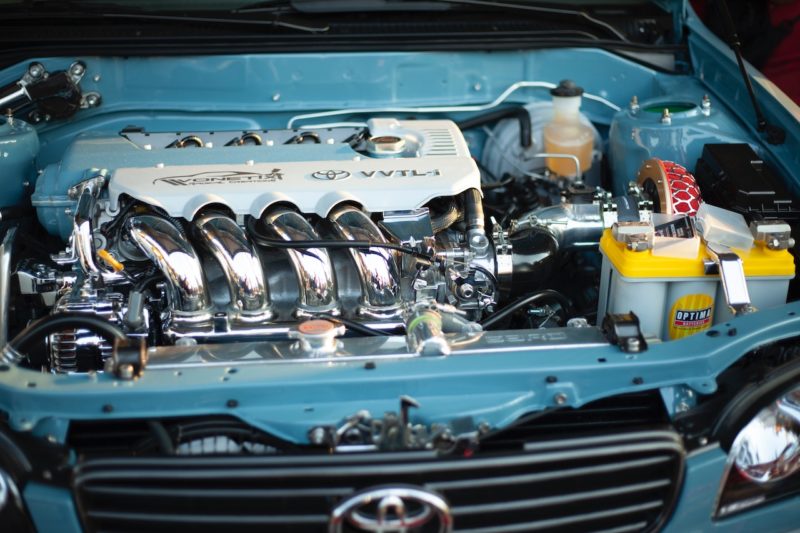

One of the questions that can be posed occasionally requires a little more explanation when breaking down the duties of a service adviser in terms of selling work. You might be wondering what that question is.
Here it is, then:
Is it better to sell a project to a customer in person or over the phone in the most effective way possible? A service department is a very ACTIVE location. There is always work to be done and something going on. The majority of the daily routines at most shops are occupied by waiters, who fill the schedule. To pass the time, there are also highly sought-after drop-off appointments. The normal day offers enough work to keep all the technicians occupied when organized properly, with jobs ranging from straightforward oil change-type procedures to a few more task-oriented or diagnostic jobs to occupy the hours. When done correctly, the advisor should drop off appointments when the technicians arrive and sell work to waiters.
While we would all prefer the ideal scenario when it comes to selling work, neither life nor ideal scenarios for doing our jobs (or selling work, for that matter) exist very often. What does this mean, then? It indicates that selling work should be done the same way, whether it is done over the phone or in person. No matter where the client is, the advisor must devise a method for presenting the tasks at hand in an orderly and effective manner. Even if the requirements for each vehicle vary, we should do everything in our power to meet the needs of our CUSTOMERS. Each counselor has a unique selling style, and the finest ones are constantly acquiring new techniques. SELL. The best way to understand what you’re working with before going in to complete the job is to check in with and update your customer. Although it’s not always possible, a superb service department keeps in touch with one another to provide information or advice to the advisor on the job based on their write-up as well.
Therefore, if at all possible, we should establish a rapport with our clients before beginning the procedure. The three C’s are everything after that. Suspicion, Reason, and Remedy. The problem or complaint should be clearly stated, followed by the reason (or, in the absence of one, our best-educated estimate) and the necessary correction and its associated cost. If done that way, the client should be aware of the issue and know how to resolve it. Gaining the client’s trust by offering to show them photos or providing them is a wonderful method to gain their business. If at all possible, always propose multiple repair solutions. We are all aware of how effective aftermarket components can be in lowering consumer expenses. However, we are also aware of when we should stick with OEM parts and when we can do that. Without offering either too little or too much information, the advisor should manage the presentation of all of those possibilities.
In the end, it comes down to providing the greatest possible customer service and making sure that our communications are clear and straightforward. We consider our job done when we have supplied the consumer with all reasonable options for repair and have done our best presentation, whether over the phone or in person. This needs to be executed with assurance and power. Nothing is worse than a hesitant and mumbling adviser. At that point, it will be up to the buyer to choose what works best for them. If the staff functions as a whole in this way, whether the customer is calling or coming in person, the shop should see growth and retention in their department and be terminating more employment than not.
There may always be circumstances that do not go in our favor, but if we are confident that we have done everything in our ability to be as helpful as possible, then our tasks are done. The prized customer will always return to work with us if we put their needs ahead of our own pockets at the moment.

It’s no secret that your website and social media may both have a beneficial financial influence on you. According to research, over 50% of consumers rely on social media to help them make buying decisions, and many people look up a brand’s social media presence before committing to a purchase. This is big news: People between the ages of 20 and 25 are more likely to visit your Facebook or Instagram profile than your website.
Even though it might be challenging to keep up with the quickly evolving online environment, understanding social media marketing is still crucial for organizations. With the average daily time spent on social media at 2 hours and 17 minutes (a little longer for us at SimpSocial – all in the name of research, of course! ), there is so much opportunity to reach your customers’ screens.
It can be intimidating to enter the world of social media for your auto dealership, and whatever you post ought to demonstrate your excellence. SimpSocial not only creates award-winning websites, but they are also sophisticated social media pros! We have a knack for knowing what dealers can do to generate leads, boost interaction, and promote your brand.
If you’re thinking about using social media for your auto dealership, keep reading to learn how to handle what is probably the most effective marketing tool at your disposal.
What social media sites should my dealership be using?
Yes, there are several platforms available. With several clear primary players and a relative newcomer that you’ve certainly heard a lot about since 2020, there are a select few to take into consideration above all others.
Facebook has long been a crucial component of social media marketing strategies for all types of organizations, and it is now included under the Meta category. By the end of 2021, there will be over 51 million Facebook users in the US! You can communicate with your clients on a mostly local level with organic postings (ones that are free to publish) and demonstrate that your dealership is active.
You can engage in paid advertising as well to connect with visitors who would not have found you otherwise or who may have just visited your website and might be enticed to come back. You can learn more about this here. At SimpSocial, we take care of this for many of our clients.
That Instagram feed, ah. Pictures of your gorgeous stock will never appear better than they do on your SimpSocial website, of course. A great picture belongs on the grid, and Stories let your followers see some behind-the-scenes action. You have a better chance of reaching clients outside of the US since 46% of the population has an Instagram account, so use it!
Do you have any opinions about the auto industry? The professional platform for it is LinkedIn, which is mostly utilized for networking, career development, and as a learning environment. Consider writing thought-provoking articles, sharing any blog posts you’ve authored, and offering delicate commentary; you’re speaking to peers here.
TikTok
Although you haven’t seen the SimpSocial team singing, dancing, or miming yet (at least not on social media), we are aware that TikTok may significantly increase a company’s reach through short videos. TikTok is a platform to experiment with if you want material that really humanizes your brand.
Which social media content should I share?
There are particular post types that we’ve tried and tested with our dealers that we know work, despite the fact that the possibilities are essentially unlimited and new forms of content grow as social media does. You should approach what we’re about to say in the same manner you would when chatting with anyone regarding your dealership, because it’s not complicated. Using a combination of them across your preferred platforms is a recipe for car dealer social media success since posting on social media is identical to doing so.
automaker content
This is your sales-y section, where you can publish information about your inventory, any current deals, financial specials, and automobiles you’ve sold. Mix it up with images, movies, and other media to draw the viewer’s attention mid-scroll.
To make your feed instantly recognizable and unified, add your logo and brand colors to any photographs and visuals you utilize.
Content for personal branding
We firmly believe in the adage “people buy from people” because it has been successful for both us and our dealers. Your clients will be more engaged with content that humanizes your brand. Think of showcasing the people who work at the dealership, the jobs that various divisions do, any work anniversaries, and the team’s enjoyable activities.
Use tools like Instagram Stories to add personality without having to worry about it remaining on your social media for life!
jolly content
Posts with competitions and gamification are excellent for increasing organic interaction. Because social media algorithms favor popular material, if you promote likes, shares, and comments on your posts, you’ll probably be exposed to more potential clients.
video material
Video is king for creating a genuine connection with your audience. If you frequently appear on video, customers will feel like they already know you, which will make the purchasing decision much easier. For this reason, weekly video usage is becoming more common among dealerships. Amazingly, watching a message in a video is said to help viewers remember it 95% more than reading it in text, which is shocking!
What steps can I take to improve my social media marketing?
Using social media to promote your company and create a strong online brand presence is cost-free. You might be passing on an enormously sizable prospective new audience if you don’t do it.
However, you can take it a step further and really focus on driving traffic to your website and getting inquiries about your products and services. Here at SimpSocial, we manage it for many of our dealers. It’s called paid social media advertising.
Paid advertisements distribute your products to precisely targeted customers in accordance with your business goals and within the budget that you specify. For car dealerships of all sizes, we manage paid social programs, design branded graphics, and achieve audience reach that exceeds that of many other marketing tactics.

One of the most crucial aspects of site design is color. It can evoke feelings, establish a mood, and provide a website with a distinctive visual identity. But selecting the ideal color palette might be challenging. In this situation, color theory is useful. We’ll talk about the use of color theory in web design in this blog article.
Understanding the psychology of color
The study of how colors influence human behavior and emotions is known as color psychology. Web designers can select colors that convey the desired emotions and provide a great user experience by knowing color psychology. Many different hues and tones can be employed in branding, which is a broad field of study in color theory. However, the following are some of the most typical hues in color theory and their corresponding brand personality meanings:
Red:
Red is linked to fervor, vigor, and excitement. Red is frequently associated with assertive, self-assured, and powerful brands. Additionally, the color red might suggest haste or danger. Orange: The color orange is linked to zeal, imagination, and optimism. Orange-colored brands are frequently seen as welcoming, approachable, and enjoyable. Additionally, the color orange might suggest youth or vitality.
Yellow:
The color yellow is linked to joy, coziness, and sunshine. Yellow-colored brands are frequently seen as upbeat, amiable, and happy. Yellow can also be used to signal a warning or caution. Green: The color green is linked to harmony, growth, and nature. Green brands are frequently viewed as being organic, eco-friendly, and well-balanced. Additionally, the color green might imply serenity or relaxation. Blue: The color blue is linked to professionalism, loyalty, and trust. Blue-using brands are frequently seen as reliable, trustworthy, and authoritative. Additionally, the color blue might suggest stability or calmness. Purple: Purple has a high-end, artistic, and spiritual connotation. Purple-colored brands are frequently seen as chic, inventive, and motivating. Purple can signify royalty or mystery as well.
Pink:
Pink is linked to sweetness, romanticism, and femininity. Pink-colored brands are frequently seen as being kind, considerate, and compassionate. Pink can signify playfulness or innocence as well.
Black:
Black is linked to power, refinement, and elegance. Brands that use black are often perceived as luxurious, stylish, and high-end. Additionally, the color black might suggest mystery or danger.
White:
White is associated with purity, simplicity, and cleanliness. White is frequently associated with modern, minimalist, and upscale brands. White can also suggest innocence or tranquility.
Gray:
Gray is associated with neutrality, balance, and maturity. Brands that use gray are often perceived as practical, professional, and timeless. Gray can also convey a sense of formality or conservatism.
Choosing the Right Color Scheme
Choosing the right color scheme is essential for creating a visually appealing and cohesive website. Color theory can help designers choose colors that complement each other and create a harmonious visual experience. Color schemes can be monochromatic, complementary, analogous, or triadic, depending on the desired effect. It’s important to note that color associations can vary across cultures and contexts, and there are no hard and fast rules when it comes to choosing colors for brand personality. Ultimately, the choice of color should be based on the specific brand identity and the desired emotional response from the target audience.
Creating Contrast
Contrast is an important element in web design. It can make important elements stand out and improve readability. Color theory can help designers create contrast by choosing colors that are opposite each other on the color wheel. For example, black text on a white background creates high contrast and improves readability.
Accessibility
Finally, color theory can help designers create accessible websites. Color contrast is an important consideration for users with visual impairments. By choosing colors with high contrast, designers can improve the accessibility of the website and ensure that all users can access the content.
In conclusion, color theory plays a crucial role in web design. By understanding color psychology, choosing the right color scheme, creating contrast, maintaining consistency and branding, and improving accessibility, designers can create visually appealing and user-friendly websites. At SimpSocial, we understand the importance of color theory in web design and strive to create websites that are both visually appealing and accessible to all users.